pumpindustry
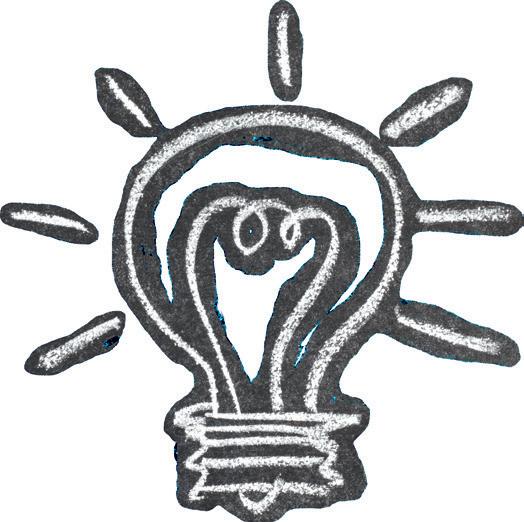
Are your pumps smart enough?
Why intelligent systems are the way forward


ISSUE 21 SPRING 2017
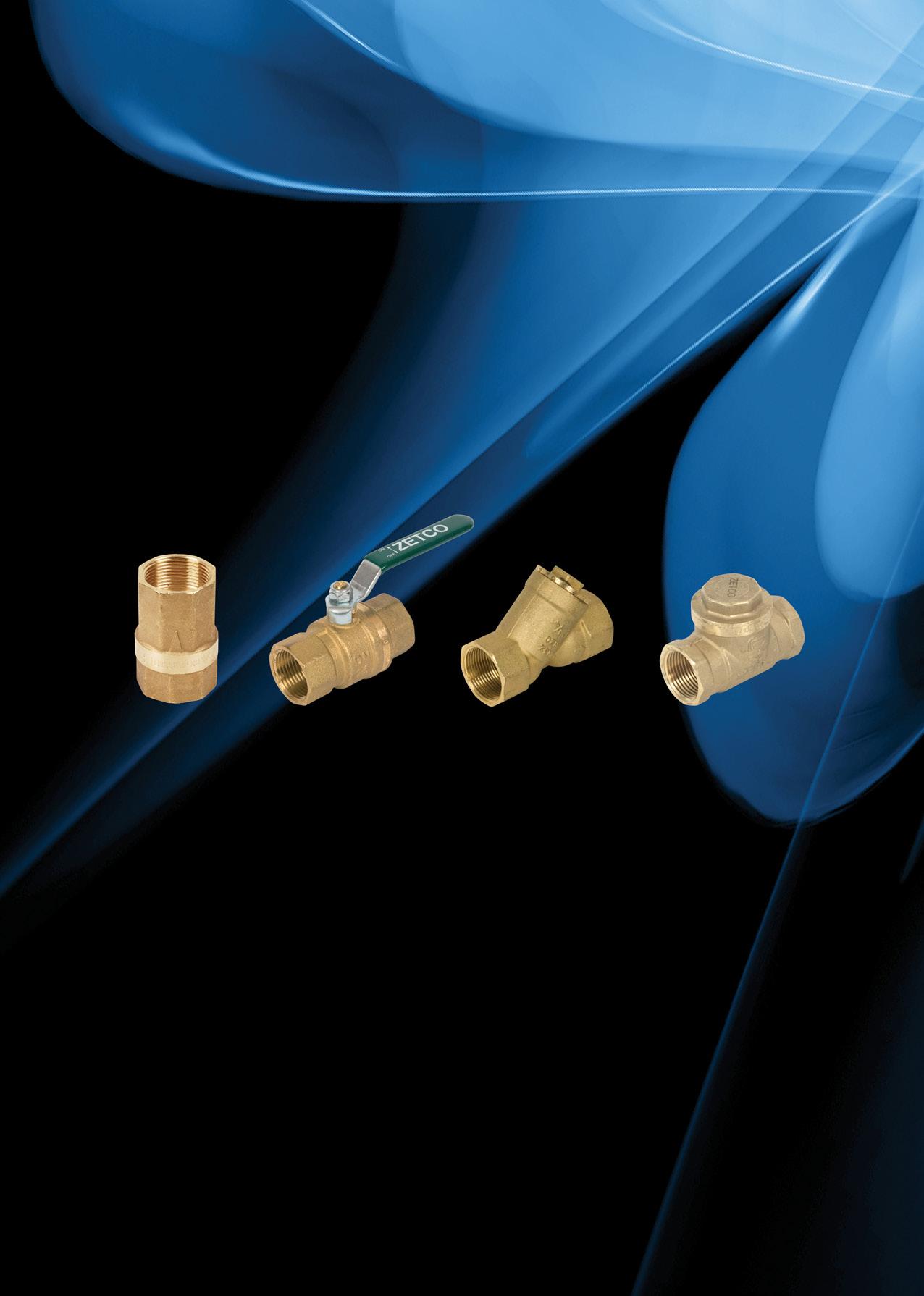
When it comes to WaterMarked valves, Zetco specialises in WaterMarked manual isolation valves including ball, gate, globe, check valves and Y strainers in DZR brass, bronze and stainless steel. Zetco has you covered Phone 1300 659 639 Email enquiries@zetco.com.au www.zetco.com.au IAPMO WM-000110 AS 5830.1
Thank you to all our
18 months
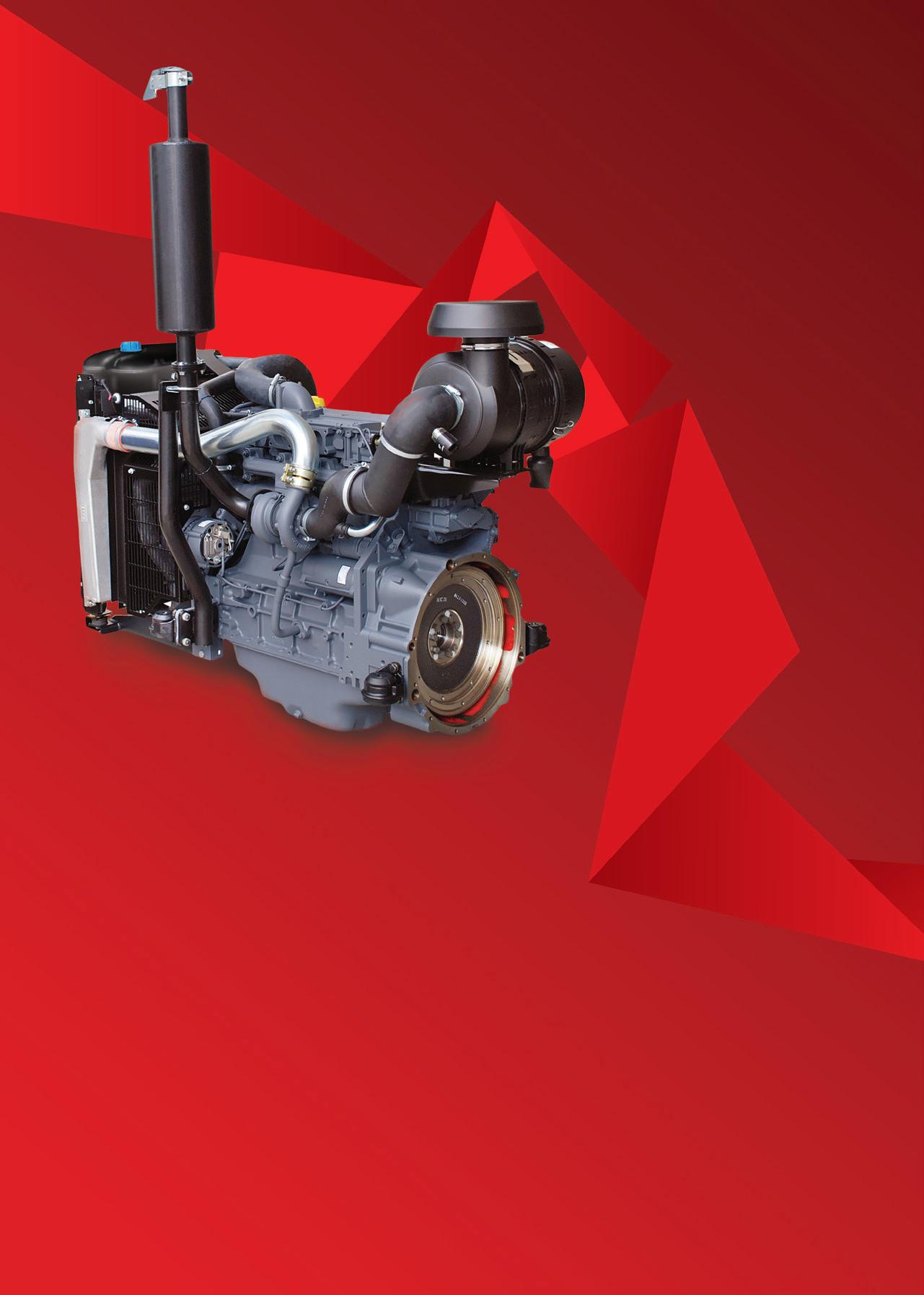


customers
making DEUTZ Drive our top selling product range!
for
developed a ‘plug and play’ product that was more cost-effective, easier to assemble with less maintenance
fuel consumption
ago we listened to feedback and
and low
package. It’s beautifully designed
customised to
stationary platform. Proudly Australian, this is now our No.1 engine solution. DEUTZ DRIVE The No.1 choice DEUTZ Australia | www.deutz.com.au | deutzoz@deutz.com | 03 9549 8400 The engine company.
DEUTZ Drive is a fully assembled Power Pack
and can be
suit any


Pump Industry Australia Incorporated
PO Box 55, Stuarts Point NSW 2441 Australia
Ph/Fax: (02) 6569 0160 pumpsaustralia@bigpond.com
Dave Alexander – President KSB Australia
John Inkster – Vice President Brown Brothers Engineers
Kevin Wilson – Treasurer/Secretary Executive Officer
Keith Sanders – Councillor Executive Officer – Marketing & Statistics Life Member
Alan Rowan – Councillor Executive Officer Publications & Training Life Member
Ken Kugler Executive Officer – Standards Life Member
Ron Astall - Councillor United Pumps Australia
Ashley White – Councillor Davey Pumps
Peter Passalacqua – Councillor Grundfos
David Brooks – Councillor Flowserve FSD
Malcolm Eyre – Councillor Franklin Electric
Mike Bauer – Councillor Dynapumps
President’s welcome
Iam pleased to reflect on a busy year as we endeavour to pursue the key objectives of our business plan.
In particular, we have been able to organise technical meetings in Sydney, Brisbane, Melbourne and Perth to provide opportunities for members to network with industry colleagues. Training programs have also be conducted in Melbourne and Sydney, as well as another in Brisbane in September.
In addition, we have been able to strengthen our relationship with other industry associations with similar interests to our own and we will continue to develop new relationships which will enhance our image in the marketplace.
Pump Industry Australia has a proud history of promoting the best standards for our industry. For example, PIA is working on two fronts to introduce up-to-date standards into legislation, so there is more compliance in critical applications.
1. Recent cooperation with the Fire Protection Association Australia (FPAA) continues, with the goal to have the AS 2941-2013 adopted by ABCB as a reference for fire pump installations in the Australian domestic market. PIA Executive Officer, Ken Kugler, has taken the lead in submitting the PIA’s proposal to ABCB for inclusion in the next issue of the National Construction Code.
To provide members with more information about the activities of FPAA, the PIA held a breakfast meeting at The Boathouse in Melbourne on Wednesday 12 July. Here, Brett Dundules provided an outline of their activities in the fire protection arena. He also covered a few of the issues FPAA experienced in keeping government legislation up to date with current industry standards.
2. In addition, Keith Sanders has been liaising with Energy Action, who are consultants for ABCB to review the requirements of Section J, which covers the maximum power levels for pumps used in HVAC installations.
Based on recent feedback, it is evident that Energy Action has adopted several of our recommendations and we are optimistic that this will result in more practical methods of assessing pump and system efficiency being adopted. Other events included:
• An Installation and Commissioning course at KSB Australia in Bundamba, Queensland on 19 September and repeated at Link Pumps in Williamstown, Victoria on 26 October.
• Nominations for the PIA's annual Innovation Award closed at the end of September. This award gives pump companies a chance to show their teams ingenuity in facing the modern challenges in our line of work. The 2017 PIA Innovation Award winner will be named at the November AGM. I wish the best to all entrants.
• Finally, our next AGM and dinner will be held at the Box Hill Golf Club in Melbourne's eastern suburbs on 21 November. Save the date as your PIA Council invites you to bring a colleague, friend, wife or partner to this important event in the association's calendar.
Membership to the PIA is a worthwhile endeavour for all levels of experience in the pump industry. Not only offering technical insight, the organisation invites members to network, collaborate and build a supportive environment for those new to the industry.
Yours in pumping, Dave Alexander
2 pump industry | Spring 2017 | Issue 21 www.pumpindustry.com.au PUMP INDUSTRY
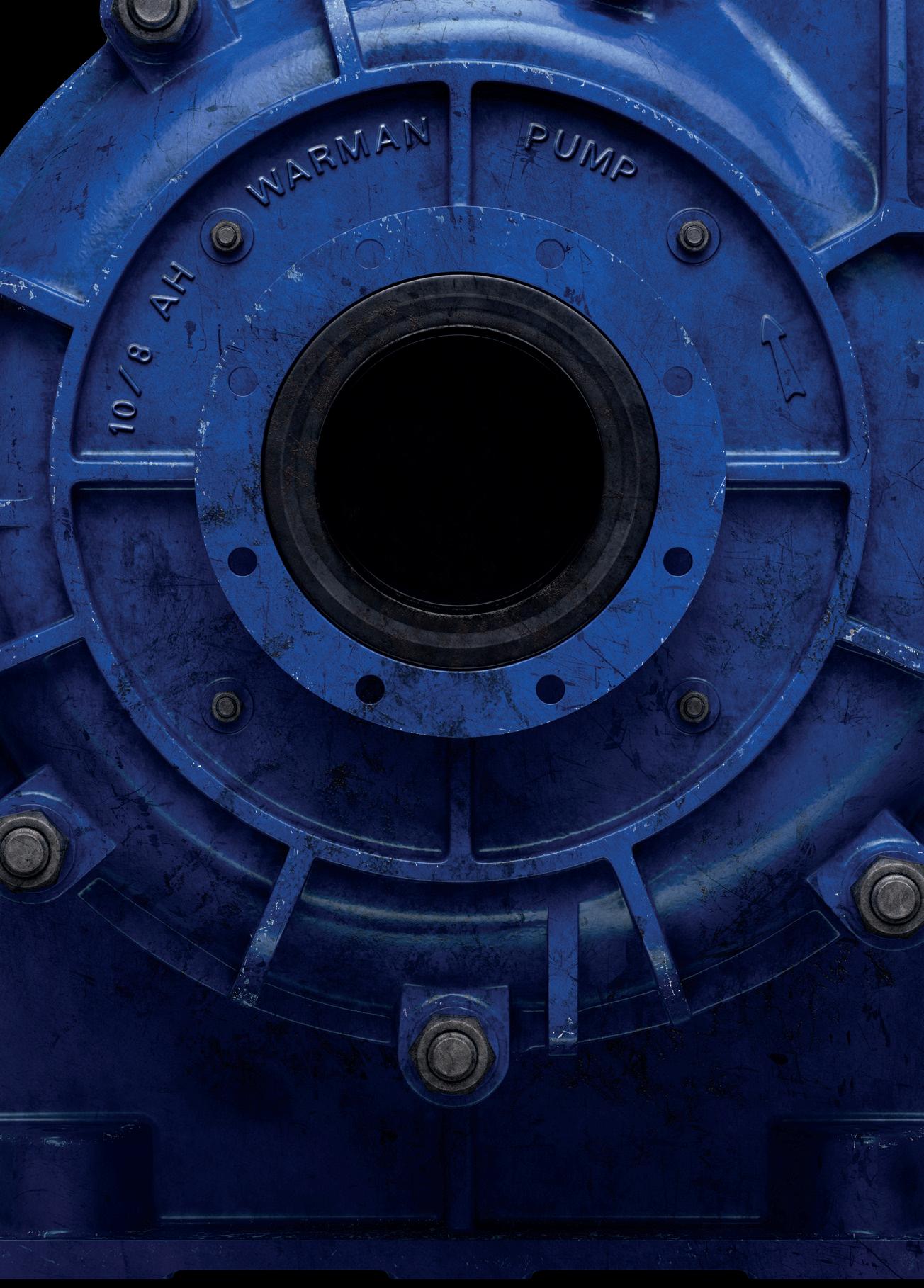

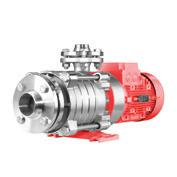

 Published by Monkey Media Enterprises
Published by Monkey Media Enterprises

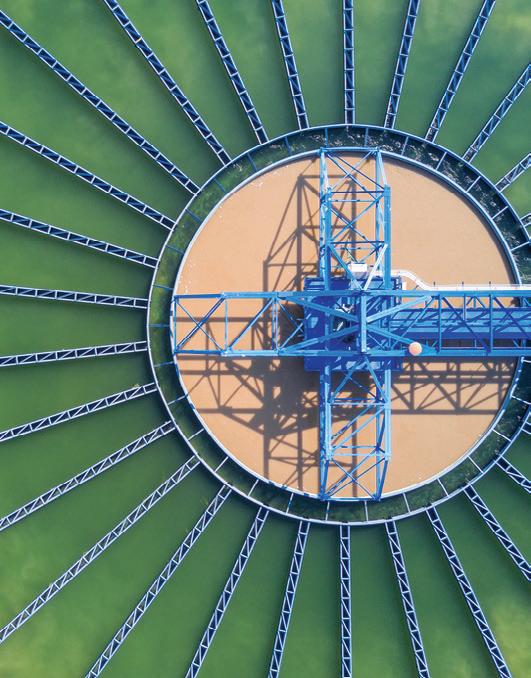

ABN: 36 426 734 954
PO Box 1763
Preston South VIC 3072
P: (03) 9988 4950
F: (03) 8456 6720
monkeymedia.com.au
info@monkeymedia.com.au
pumpindustry.com.au
magazine@pumpindustry.com.au
Publisher and Editor: Chris Bland
Managing Editor: Laura Harvey
Senior Associate Editor: Jessica Dickers
Associate Editor: Lauren Cella
Contributing Editor: Michelle Goldsmith
Journalist: Elisa Iannunzio
Marketing Director: Amanda Kennedy
Marketing Associate: Sam Penny
Marketing Assistant: Rima Munafo
Production and Customer Service:
Titian Bartlau
Senior Designer: Alejandro Molano
Designer: Jacqui Abela
ISSN: 2201-0270
This magazine is published by Monkey Media in cooperation with the Pump Industry Australia Inc. (PIA). The views contained herein are not necessarily the views of either the publisher or the PIA. Neither the publisher nor the PIA takes responsibility for any claims made by advertisers. All communication should be directed to the publisher.
The publisher welcomes contributions to the magazine. All contributions must comply with the publisher’s editorial policy which follows. By providing content to the publisher, you authorise the publisher to reproduce that content either in its original form, or edited, or combined with other content in any of its publications and in any format at the publisher's discretion.
NEWS Seawater pumped hydro project advances to design stage......6 Reducing energy costs with efficient pumping systems 8 Contract awarded for new pipeline and booster pump station .9 Northern Adelaide Irrigation Scheme moves forward ............ 10 Canberra's sewage treatment plant receives accolade 11 The future of HVAC in the net-zero sector .............................. 12 New water treatment plant for King Island .............................. 14 PIA NEWS PIA breakfast meeting .............................................................. 16 PIA MEMBER NEWS Hydroforming process world first technology ........................ 18 INDUSTRY NEWS The four questions to ask when buying a pump engine 20 Overcoming the limitations of rigid pipes with layflat hoses .. 22 Tough sub pumps that maintain high head 24 Meat exporter discovers innovative DAF solution 25 CONTENTS Cover image highlights the feature exploring how intelligent pumps can offer energy savings.
ISSUE 21
Are your pumps smart enough? Why intelligent systems are the way forward PLUS the Industry Capability Guide The key reference bible for all pump users in 2018
1 October 2016 – 31 March 2017
pumpindustry
3,719


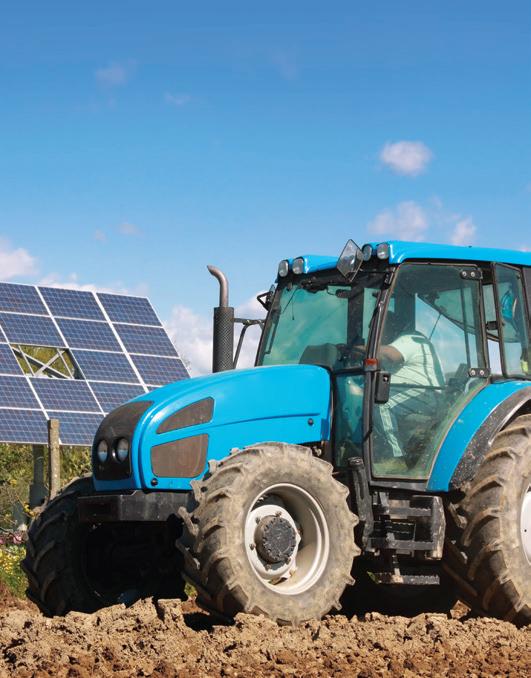
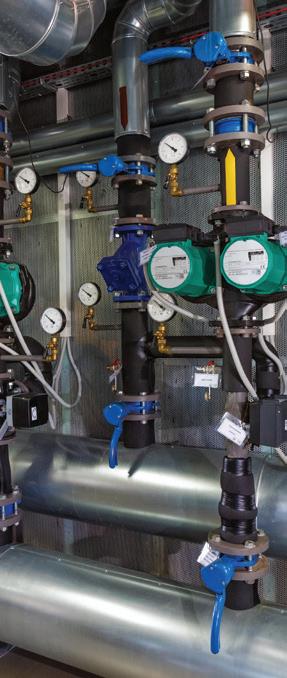
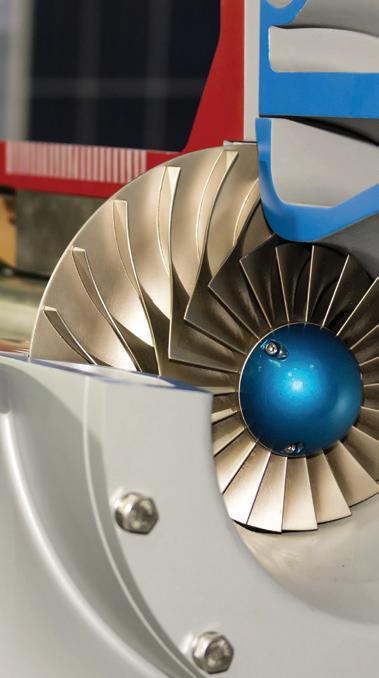
REGULARS
offer potential for significant energy savings
pump training
5 www.pumpindustry.com.au pump industry | Spring 2017 | Issue 21 pumpindustry WIOA Water operators recognised for best tasting water.......................................... 28 ENERGY EFFICIENCY Calculating energy savings and payback ............. 32 VSDs lead irrigation efficiency measures ............ 34 SMART PUMPS Intelligent pumps
.................................................... 38 TRAINING No substitute
........... 42
for hands on
President’s welcome ................. 2 Ask an expert: Two common concerns: pricing and future development of progressive cavity pumps. ............................ 26 Pump school: Single versus parallel operation of centrifugal pumps ..................... 46 Technical System simulation as a troubleshooting tool 44 Editorial schedule .................... 48 Advertisers’ index ................... 48
Seawater pumped hydro project advances to design stage
Australian Renewable Energy Agency (ARENA) has released a feasibility study conducted by EnergyAustralia together with consortium partners Arup Group and Melbourne Energy Institute, for Australia’s first seawater pumped hydro project in Cultana in South Australia’s Spencer Gulf that could generate 225MW of electricity.
The consortium of companies said the energy storage project can now proceed to the next stage, including engineering design, planning approvals and more detailed financial modelling.
The study found the plant would be capable of generating 225MW of electricity and 1770MWh of power with eight hours of storage – the equivalent of more than 126,000 home batteries, but at a third of the cost.
The knowledge sharing report concluded that the technical challenges of using seawater in pumped hydro energy storage (PHES) projects can be overcome, subject to further engineering design.
In early 2017, the consortium was awarded $453,000 by ARENA to partially fund the feasibility study.
Regional Leader Environment and Resources Arup Australasia, Mike Straughton, said large-scale storage will play a significant role in providing resilience to the National Electricity Market as generation capacity transitions towards greater intermittent technology.
“Arup is committed to remaining at the forefront of projects such as Cultana, which support the market in the transition
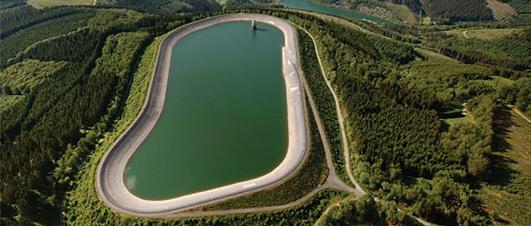
to a lower carbon future, and is excited to be working with EnergyAustralia as the project progresses,” Mr Straughton said.
While pumped hydro isn’t new technology, the project proposed for Cultana would be the first in Australia to use seawater rather than freshwater, a key consideration for a dry state like South Australia.
As the consortium moves ahead with its assessment it will also begin another round of community consultation. Initial cost estimates suggest the project would cost $477 million to build, and could be constructed and operational by 2023.


Searching for the most energy and cost efficient pumps for your applications?
With our extensive range of pumps, first class customer service and ongoing comprehensive support, Kelair Pumps are second to none when it comes to your industry needs. Call us today!
• Food & Beverage
• Water & Wastewater
• Irrigation
• Power


• Environmental
• Mining-Mineral Process
• Oil & Gas

• Chemical, Paints & Inks
• Pharmaceutical
• Building & Fire
• General Industry







6 pump industry | Spring 2017 | Issue 21 www.pumpindustry.com.au NEWS CALL 1300 789 466 WHEN PUMP KNOWLEDGE MATTERS When Pump Knowledge Matters KELAIR PUMPS AUSTRALIA KELAIR PUMPS AUSTRALIA - 1300 789 466 - www.kelairpumps.com.au INDUSTRIAL PUMPS | BUILDING AND FIRE | ENVIRONMENTAL | SERVICE NSW | VIC | TAS | QLD | WA 03/17

Reducing energy costs with efficient pumping systems
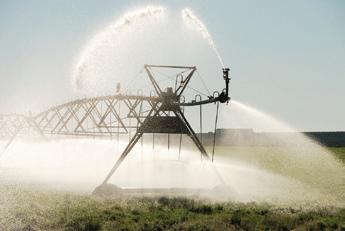
Queensland irrigators are improving pumping systems to reduce on-farm electricity use and energy bills as a result of the state government-funded Queensland Farmers’ Federation (QFF) and Ergon Energy, Energy Savers Program.
Over 60 per cent of the 130 farms participating in the QFF Energy Savers Program have or plan to implement part of the $3 million of annual energy cost savings identified in the energy efficiency audits across different industries. This includes 50 farms implementing energy efficiency projects and another 32 that are planning to in the near future.
QFF President, Stuart Armitage, said that despite the evident structural challenges with energy affordability in Queensland, farmers are not waiting around on the promise of eventual price relief.
“The biggest uptake has been by irrigators improving pumping systems. Crop requirements, climatic conditions, water licensing and irrigation channel conditions mean they don’t have the luxury of deciding when they pump water,” Mr Armitage said.
“Farmers are implementing projects to improve and upgrade irrigation, refrigeration, lighting, and installing solar photovoltaic (PV) systems.
“A recent survey of program participants found that over 90 per cent of respondents felt that Energy Savers has raised awareness of on-farm energy management.
“Most encouraging too has been feedback from energy efficiency suppliers that farmers are approaching them for improvements based off the case studies and information provided through the program.
“As more farmers have time to properly consider the recommendations on their unique business situations, the expected level of savings should increase.
“Coming into the election, QFF will be asking the returning or incoming government to extend the successful Energy Savers Program, and look at other opportunities to assist farmers with an integrated approach to energy and water efficiency initiatives.”
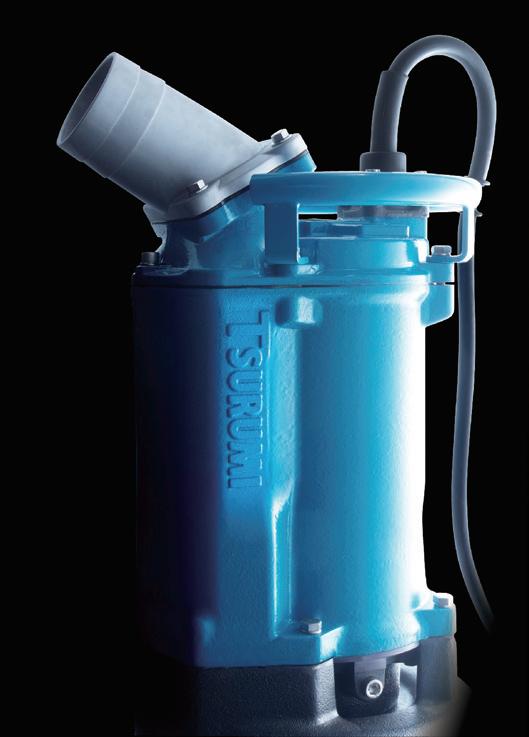
8 pump industry | Spring 2017 | Issue 21 www.pumpindustry.com.au NEWS
Contract awarded for new pipeline and booster pump station
The contract for the construction of a 38.5km pipeline to connect the lower Yorke Peninsula towns of Warooka and Point Turton to SA Water’s mains water supply, as well as a new booster pump station, has been awarded.
Leed Engineering and Construction has been contracted to carry out the work, which is scheduled for completion by late 2018.
The 38.5km pipeline will secure the future of the two town’s water supply, and is expected to create 26 full-time jobs during construction.
Improvements under the project include building a new booster pump station along the pipeline route, laying 1.25km of new water mains in Point Turton, and re-roofing the existing Warooka storage tank.
The new pipeline will join Yorke Peninsula’s existing network at Minlacowie and move water to Warooka, where it will then pass through the local distribution network to supply around 1500 customer connections.
Trenching will be used to install a variety of pipe sizes in this new part of SA Water’s network. These will be mostly made of PVC, which is a flexible plastic-like material that is more resistant to breaks caused by soil movement.
Minister for Water and the River Murray, Ian Hunter, said once connected, the town’s new supply will come from the Morgan and Swan Reach Water Treatment Plants.
“Warooka and Point Turton’s water supply is currently sourced from a borefield, which SA Water’s extensive modelling has indicated isn’t adequate to provide for future demand.”
There was a competitive tendering process after the State Government announced in July 2017 that SA Water will invest up to $13 million in the project.


9 www.pumpindustry.com.au pump industry | Spring 2017 | Issue 21 NEWS
Left to right: Mayor Ray Agnew, SA Water's District Leader Trevor Kobelt, Construction & Maintenance Worker Barrie Hunt and General Manager Assets, Operations & Delivery, Mark Gobbie at Minlacowie Pumping Facility.
Trenching equipment indicative of the type that will be used to complete the Warooka-Point Turton Pipeline.
Northern Adelaide Irrigation Scheme moves forward
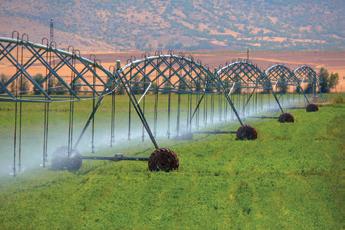
The Federal Government has announced funding support for the $155.6 million Northern Adelaide Irrigation Scheme (NAIS) which will create an estimated 3700 jobs and add more than $500 million a year to the South Australian economy.
Funding has been secured through the National Water Infrastructure Development Fund (NWIDF) for the NAIS, which adds to $110 million committed by the State Government in early 2017.
South Australian Premier, Jay Weatherill, said, “The scheme’s focus is helping South Australia to be competitive in the export market by transforming the region into the national leader in intensive, high-tech food production, as well as drive employment growth, and attract new skills and talent into the state.
“The NAIS is a key element of our Northern Economic Plan and aligns with this Government’s economic priority of ‘Premium Food and Wine Produced in our Clean Environment and Exported to the World’.”
The scheme will deliver an additional 12GL a year of highquality recycled water from the Bolivar Wastewater Treatment Plant. This is an increase in capacity of 60 per cent – suitable for commercial food crops – to help expand the state’s
irrigated primary production industry in the Northern Adelaide Plains north of the Gawler River.
To deliver the additional recycled water, upgrades are required to the Bolivar Wastewater Treatment Plant, as well as a new pipe network north of the Gawler River.
Once necessary approvals are in place, construction will take approximately a year and a half.
The new infrastructure will be built with the ability to increase capacity to 20GL a year, as demand and access to overseas markets grow.
An independent economic assessment has identified the extra 12GL of recycled water a year would create 3700 jobs in the region and add $578 million a year to the state’s economy – growing to 6,000 jobs and $1.1 billion a year when at full 20GL capacity.
SA Water and Primary Industries and Regions SA (PIRSA) have partnered to develop the project which is one of eight South Australian ‘priority initiatives’ on Infrastructure Australia’s Priority List.
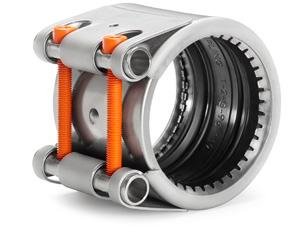

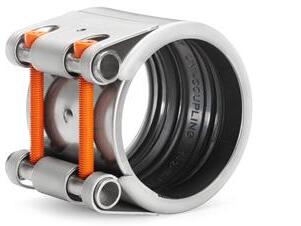
10 pump industry | Spring 2017 | Issue 21 www.pumpindustry.com.au NEWS Pipeline Installation, Modification + Repair Easy + Quick Installation Light, Modern, Efficient OHS Advantages No Hot Work Permit No Heavy/Specialist Equipment Required Innovative design Most technologically advanced pipe coupling on the market Superior European quality Designed and fully manufactured in The Netherlands Trusted Applications Advice for 20+ Years Unsurpassed Product Knowledge Unrivalled Specialist Technical Expertise One-Stop Shop for Project Consultancy Partnership and Sales Personal + Responsive Service WE Care about YOUR Business Australian Owned Your Pipe Coupling Specialists Engineering Solutions Since 2004 www.kces.com.au info@kces.com.au CALL KCES ON +61 3 9728 3973 FOR A NO-OBLIGATION CHAT ABOUT UNI-COUPLINGS – THE BETTER CHOICE BY UNITED PIP ELINE PRODUCTS EUROPEAN QUALITY PIPE CON NECTION AND REPAIR SINCE 1988
Canberra’s sewage treatment plant receives accolade
Canberra’s main sewage treatment plant, the Lower Molonglo Water Quality Control Centre (LMWQCC) operated by Icon Water, has received a significant accolade from Engineers Australia with the presentation of the Historic Engineering Marker interpretive panel.
The plant treats 80 to 90 million litres of sewage every day, or around 290 billion litres a year, to a quality that is often better than the river that it's released into.
The treatment plant removes an average of one million litres of sludge, and creates 16 tonnes of ash a day. LMWQCC was built to service the needs of Canberra’s population, and could be extended to serve up to a million people.
The Engineers Australia Engineering Heritage Recognition Program has placed an interpretive panel at the entry of LMWQCC to show the treatment plant’s national engineering significance.
Engineers Australia established the Australian Historic Engineering Plaquing Program in 1984 to provide recognition to engineering works of historic or heritage significance, and to the hard
working engineers who created them.
Ray Hezkial, General Manager Project Delivery, Operations and Maintenance, said, “Icon Water is excited to be receiving such important recognition from Engineers Australia.
“The Engineering Heritage Marker is the ultimate accolade of engineering heritage significance.
“The Lower Molonglo Water Quality Control Centre is unique in Australia for its treatment process and its standard
of treatment as it discharges into an important river system.
“We would also like to give thanks to the operators who work hard to keep the treatment plant working 24 hours a day seven days a week to process Canberra’s wastewater.”
LMWQCC was planned in the late 1960s and built from 1974-1978 for almost $50 million.
To rebuild a similar plant today would cost around $600 million dollars.



Riverscreen is the ideal solution for any operation that depends on a water supply containing suspended debris. Simple in its design and foolproof in its operation.
AVAILABLE IN SIZES FROM: 100mm - 300mm suction
• Solutions for challenging suction applications
• Genuine self-cleaning screen
• Low maintenance reducing downtime
• Manoeuvrability thanks to lightweight construction
• Effective removal of debris & matter including algae
• Consistent water supply to the pump
• Flow Rates from: 6L/scc - 250L/scc
11 www.pumpindustry.com.au pump industry | Spring 2017 | Issue 21 NEWS
MORE INFORMATION VISIT WWW.ONGA.COM.AU RIVERSCREEN OPERATES IN AS LITTLE AS 100MM OF WATER
FOR
The future of HVAC in the net-zero sector
The Australian Institute of Refrigeration, Air Conditioning and Heating (AIRAH) has released a report on the future of HVAC in net-zero buildings, finding that building regulations must assess true performance and target net-zero energy, and that mandatory energy disclosure for existing buildings is a must.
The report is based on a foresighting workshop in which a variety of experts and practitioners from the HVAC, building services and associated industries considered what form HVAC will take in the net-zero building sector of the future.
AIRAH CEO, Tony Gleeson, said, “Foresight can help an industry navigate change by providing an early warning of the barriers and opportunities ahead.
“By tasking a group of experts and practitioners to develop a credible picture of future buildings and future heating, ventilation and air conditioning (HVAC), AIRAH has been able to start the conversation on the strategies that can be used, and the changes to industry, technology and practice that will be required to make this happen.”
AIRAH’s Phil Wilkinson said a series of recommendations or actions have been developed to help government and industry understand how the HVAC and property sectors can best transition to delivering and managing net-zero energy buildings.
“AIRAH will continue to lead industry change by ensuring the implementation of the PRIME whole-of-HVAC&R industry
strategy for the transition to low emissions. AIRAH is working with the CSIRO and PRIME to establish an Innovation Hub for Affordable Heating and Cooling, or iHub,” Mr Wilkinson said.
The key findings of the foresighting report are:
• Building regulations must assess true performance and target net-zero energy over time
• Training and education initiatives should help all stakeholders understand the risks and opportunities of a net-zero building
• Increased research into low-emission HVAC and better support for innovative technology and approaches are needed. On the agenda, a HVAC research roadmap and improved research/industry communications pathways
• Increased investment in Australian research for Australian innovations in HVAC is required to counteract the conservatism of the industry






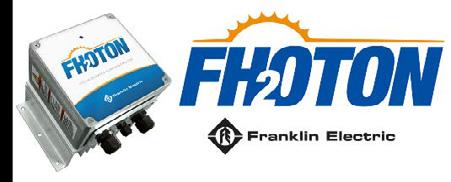



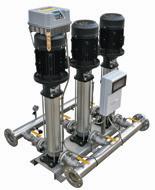



12 pump industry | Spring 2017 | Issue 21 www.pumpindustry.com.au
SOLARPAK
THE NEXT GENERATION OF
NEWS

Quality Pumps
Air operated diaphragm pumps from Sweden
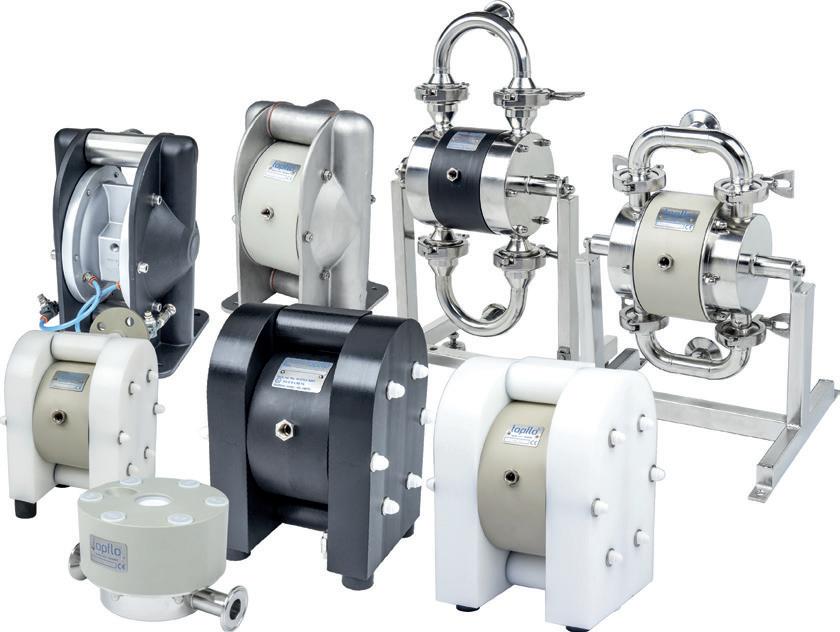
Long life diaphragms Energy saving drive
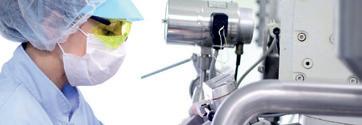





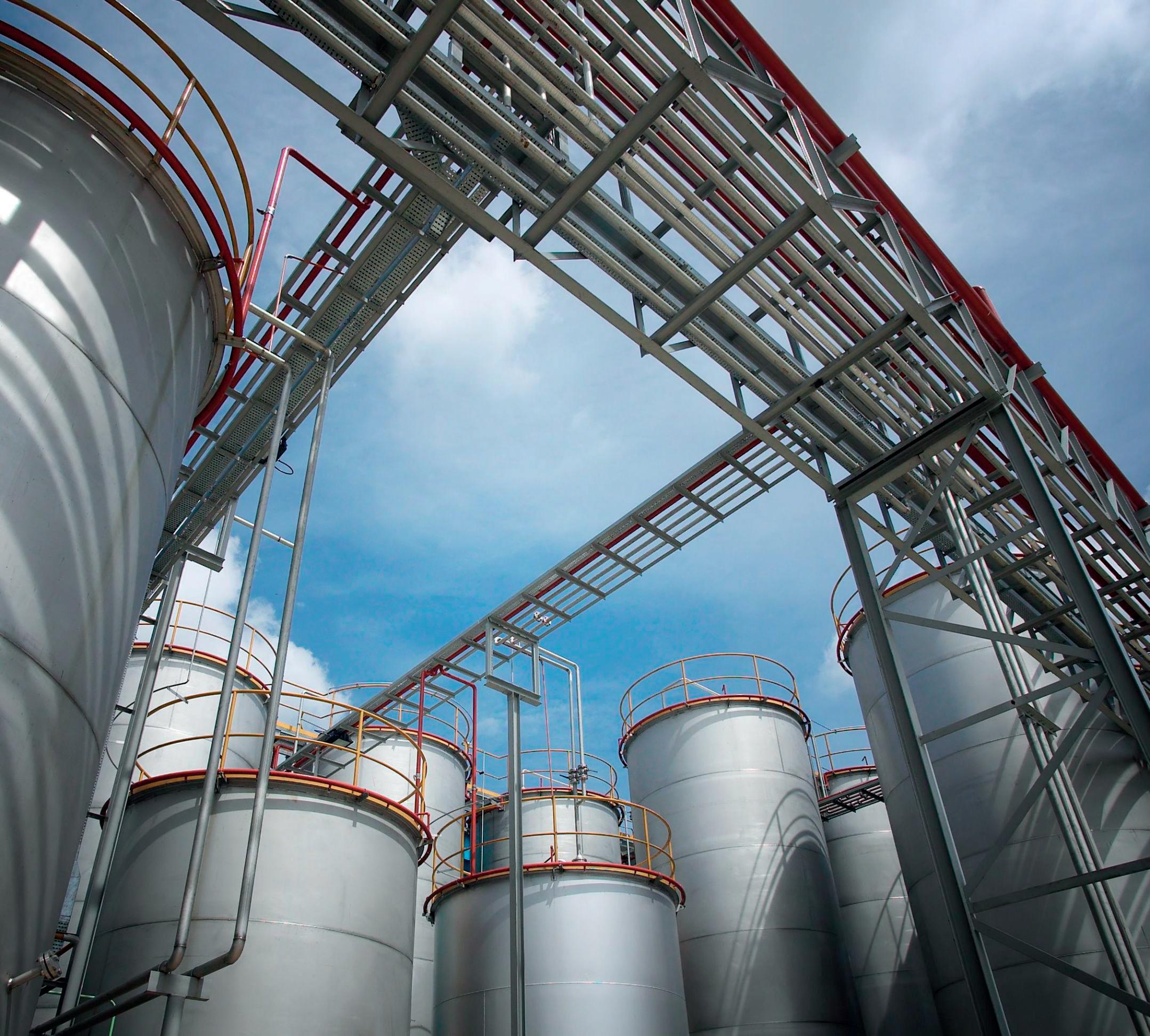
70% fewer parts then other brands

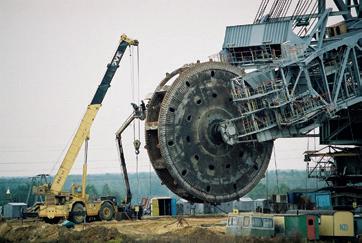

om Hygienic applications soup, cream, syrup, chocolate, alcohol, dairy products, paste, milk, soap, toothpaste, shampoo er press tion cooling liquids, lubricants Mining and construction Adhesives, sump, dewatering, s,
Run dry without damage Variable flow control
Self priming up to 5m
P r e m ui qmnedewSfoytilau lauqmuimerPti foy S w e den Premium quality ofSweden Phone: +61 1800 739 243 Email: info@greenprocess.com.au Authorised Representative:
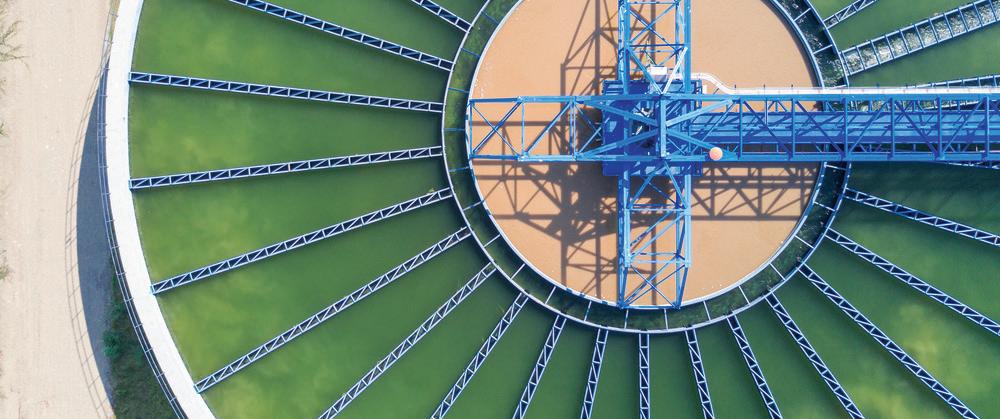
New water treatment plant for King Island
TasWater has awarded the contract for the construction of the $8.3 million King Island water treatment plant in Tasmania.
Laurie Curran Water will construct the new plant as part of the King Island Water Infrastructure program.
The plant will supply high-quality drinking water to residents of Currie and Grassy through a new 26km pipeline which is under construction between the two townships.
TasWater Project Manager, Randal Muth, said the contract will include both design of the system, which will begin straight away, and the construction due to get underway at the start of 2018.

“This contract will see the construction of significant infrastructure on the island to supply the two main townships with safe drinking water straight to the tap,” Mr Muth said.
“The project will include new raw water intake structure and pump station from the Upper Grassy Dam to feed the new water treatment plant. We will also be building a new clear water storage tank near Gentle Annie Reserve along with another tank, three times larger, to be built in Currie.”
View KSB Australia’s new range of wastewater pumps
The new treatment plant, located at the same site of the existing Grassy plant, will incorporate dissolved air flotation, nanofiltration and carbon filtration, as well as disinfection.
“When it’s finished, the operational plant will produce one million litres of safe, treated drinking water per day. That is more than enough water to fill two Olympic swimming pools every week,”
Mr Muth said.
The King Island Water Infrastructure Project will be completed near the end of 2018.
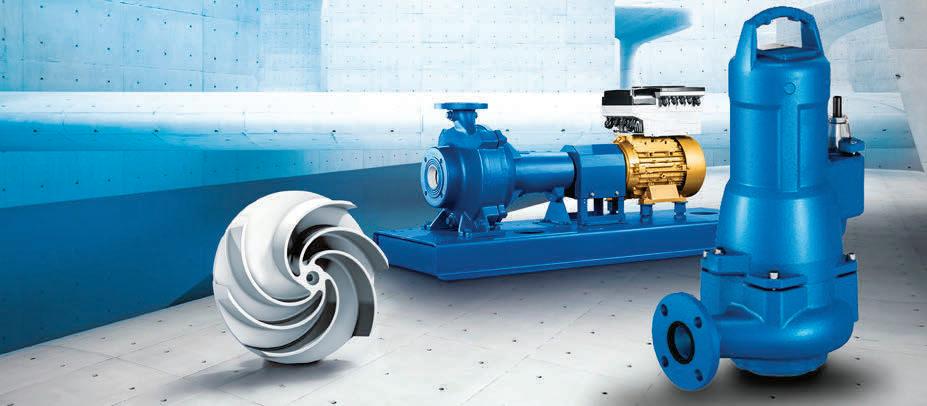
KSB Australia‘s new pumps with non-clogging impellers Reliable and Efficient
KSB Australia’s new generation of wastewater pumps, with non-clogging impellers and high-efficiency motors, offer the best efficiency and reliability. Our Technology. Your Success. Pumps • Valves • Service
The new KSB wastewater pumps, the Amarex KRT max series, are achieving efficiencies which have previously only been reached by single-channel impellers. Contact KSB Australia for all your pump and wastewater system solutions.
14 pump industry | Spring 2017 | Issue 21 www.pumpindustry.com.au
24hr Service: 1300 301 356 NEWS
www.ksb.com.au
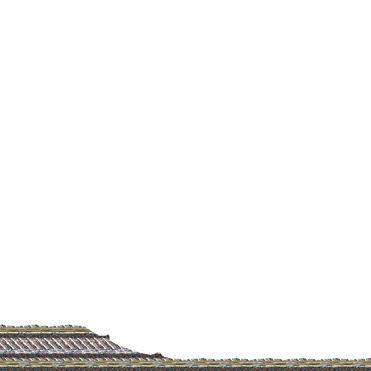

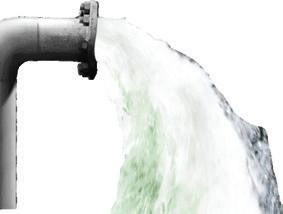
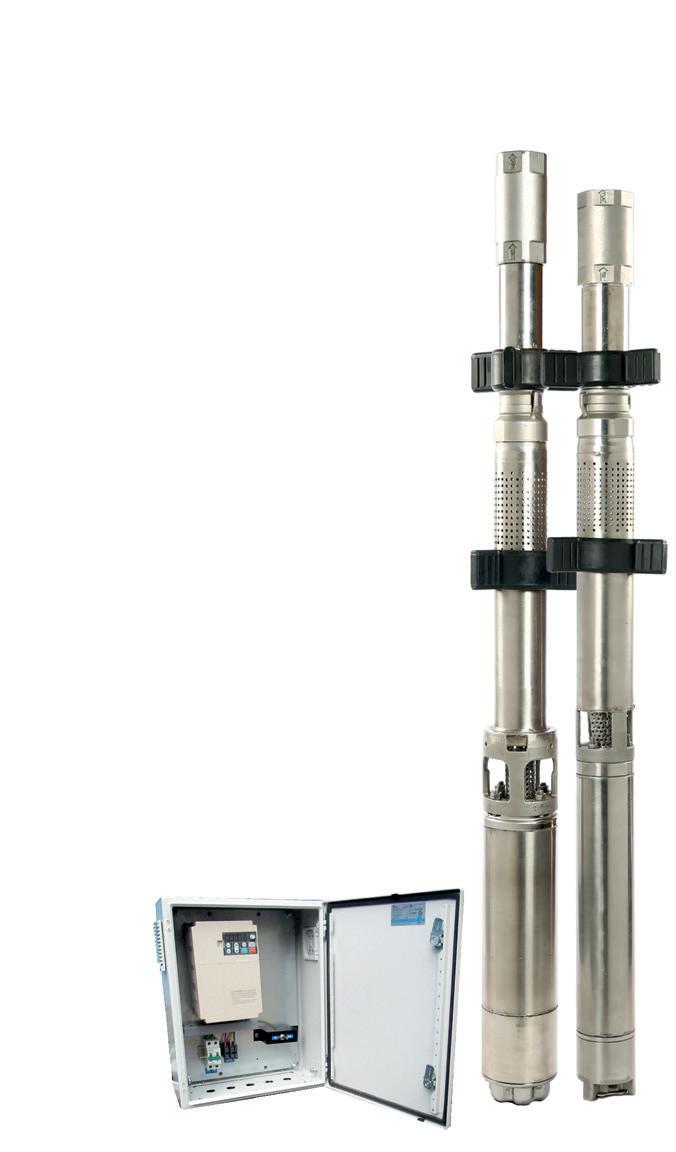
PIA breakfast meeting
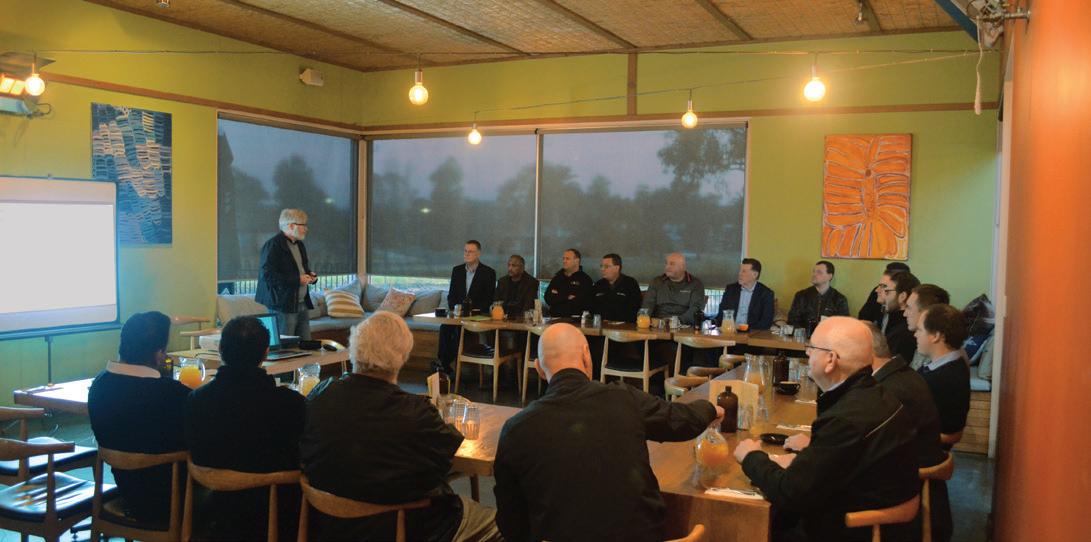
On 12 July, the PIA hosted a breakfast meeting at The Boathouse café in Maribyrnong, Melbourne, with attendees hearing about recent cooperation with the Fire Protection Association Australia (FPAA) to promote better standards in the fire protection market.
Ron Astall, PIA Councillor, opened the meeting and provided attendees with an overview of PIA activities for 2017. Keith Sanders, Executive Officer - Marketing and Statistics, then presented an overview of pump industry statistics.
Following the opening presentations, attendees heard from guest speaker, Brett Dundules, Senior Technical Officer at the FPAA, on ‘The advocacy of FPAA Australia and working with industry stakeholders’. Mr Dundules provided an outline of FPAA activities in the fire protection sector, and discussed a few of the issues the organisation has experienced with getting government legislation to keep up-to-date with industry standards.
to attendees as it included a progress report on recent
cooperation between the PIA and FPAA to update industry standards. The FPAA has played an important role in this project as it is the leading body in the sector and is very active in negotiating with government to improve standards and minimise risk.
With the support of the FPAA, the PIA has submitted a Proposal for Change (PFC) for AS2941-2013 Fire Pumps to the Australian Building Codes Board. The proposal is for the current AS2941-2013 to be nominated specifically in the National Construction Code (NNC) and not be a secondary reference in the sprinkler and hydrant codes. This would mean that the standard would directly be covered by legislation and

High performance Dewatering, Auto Prime, Pump Packages
Our pumps are standard with features like 50 SCFM vacuum mechanical diaphragm pump, our patented posilock valve which prevents carry over, NRV, and available in bare shaft or SAE mount with fly wheel coupling Our standard off the shelf material of construction offer is ductile iron castings/hardened SS impeller/SS shaft and run-dry mechanical seal.
Leading-edge hydraulic engineering makes our centrifugal pumps the highest performing pumps on the market. Our pumps provide better flow, higher

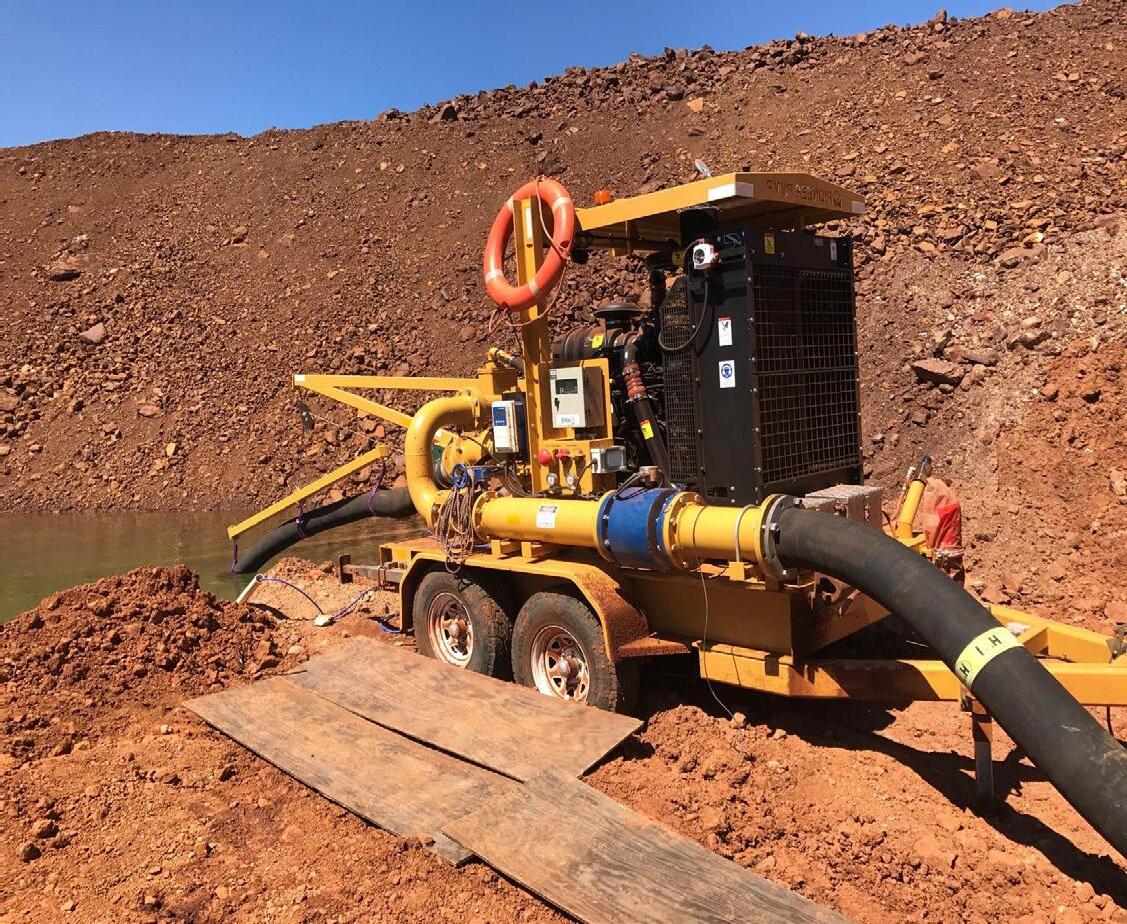
PIA NEWS
Ron Astall, PIA Councillor, updated attendees on recent PIA activities and chaired the Q&A session.
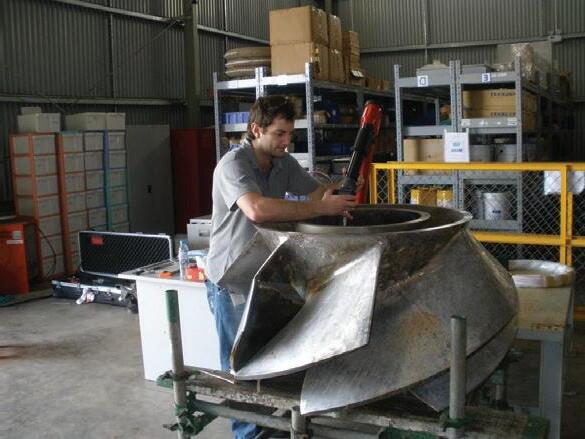
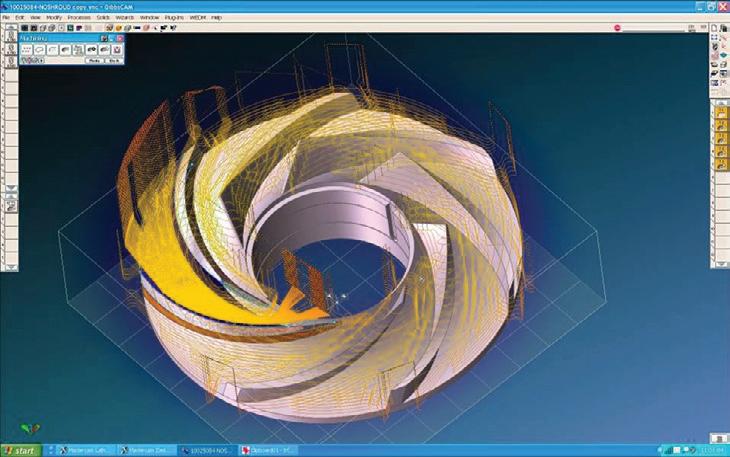
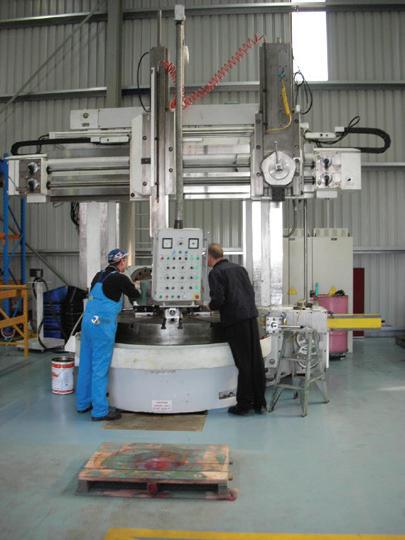

Comprehensive Pump Support
Reliable & Responsive Service
Engineered Pump Rebuilding
Since 1969, Hydro has built its worldwide pump service organization by bringing a high level of engineering expertise and quality service to the pump aftermarket. Hydro Australia works with our customers to evaluate and understand the root causes of pump degradation or failure and to provide unbiased engineering analysis, quality workmanship and responsive field service for improved plant operation.
Certified Service Centre
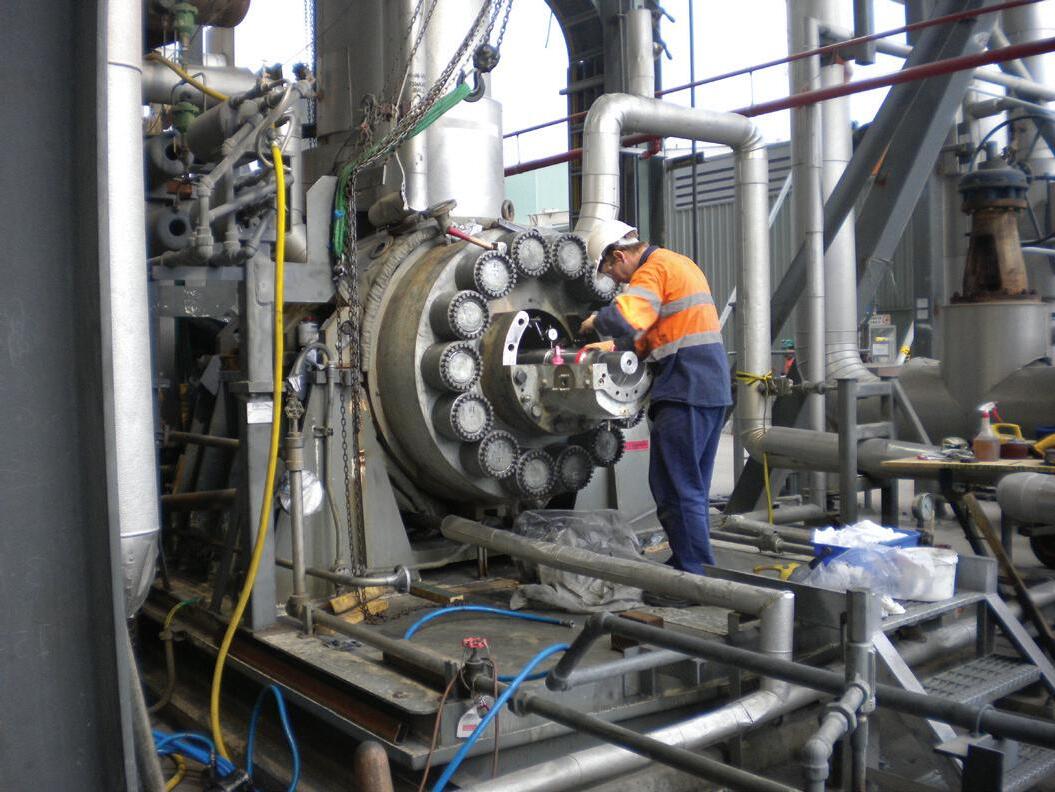
Hydro Australia has always been committed to Quality and Occupational Health & Safety. Hydro Australia holds the AS:NZS ISO 9001:2008 certificate in addition to the AS:NZS 4801 and AHSAS 18001 certificates.
Turnkey, Field Service and 24/7 Emergency Response
Hydro Australia’s Field Service team has extensive knowledge of pumps from most major manufacturers and provides turnkey service, installation / start-up supervision, field machining, vibration analysis, laser alignment, pump system troubleshooting and emergency field response 24 hours a day, 7 days a week.
Pump Parts
When you require a part and are facing a long lead time, Hydro Australia can meet your needs in a reduced time frame through our reverse engineering, patternless casting and integrated manufacturing processes. Hydro's engineers review and evaluate all parts to offer important upgrades and apply new technologies that will reduce wear and improve reliability.
Pump Testing - Managing Risk
Ensure your pump will perform as required. Hydro’s 5000HP Performance Test Lab, located in the United States, is compliant to API610 and Hydraulic Institute standards and can test horizontal, vertical, and submersible pumps.
Training
Hydro teaches practical solutions and troubleshooting techniques for common pump problems and offers specialized hands-on training programs. View upcoming courses online at www.hydroinc.com.
Call Hydro Australia at (03) 51650 390 with your pump service inquiries or contact Ross Bertolimobile: (0418) 581190 email: ross@hydroaustralia.com.au.
17 www.pumpindustry.com.au pump industry | Spring 2017 | Issue 21
A Hydro Company Hydro Australia, Pty. Ltd. Hydro Australia Pump Service Centre Morwell, Victoria 3840 www.hydroaustralia.com.au (03) 51650 390
HYDROFORMING PROCESS
WORLD FIRST TECHNOLOGY
When Ebara Corporation established its factory in Northern Italy, its main purpose was for the production of stamped stainless steel pumps. As well as utilising the most modern manufacturing techniques and equipment of the time, Ebara also developed and patented their own world leading processes. The most prominent example of this is the hydroformed one piece volute casing.
Once the product and technique was designed by utilising the latest computer programs, it underwent a strenuous testing program. This included the casings undergoing one million cycles of pressure pulsations between six and 12 bar.
The internal deflection due to pipe strain was also measured to ensure the success of the support structure design.
This technology is clearly seen in Ebara’s 3' series of end suction pumps. These have proven their reliability and value for many years now, and continue to be another world leading product from Ebara.
To complement the success of the Hydroformed Ebara 3LS (all 316 SS) and 3M (304 SS) series of pumps, Ebara Pumps Australia has recently introduced the low-cost 3D series of pumps.
The 3D model uses the same stamped stainless steel components as the 3M but comes with a cast iron casing. This economical close coupled motor pump to EN733 (DIN 24255) dimensions is available in sizes 32mm 1.1kW up to 50mm 11kW at 2900 RPM.

Pumps are an extended motor shaft design and are fitted as standard with high-efficiency IE3 motors (three phase versions).
The 3D pump is made at the Ebara factory in Italy and options include high temperature and hard face mechanical seals.
About Ebara Corporation
Ebara Corporation was founded in Japan in 1912 and is now one of the world’s largest pump manufacturers, consisting of more than 88 companies around the world, with a workforce of more than 15,000 people on five continents.
The huge scale of production and distribution is matched by constant commitment to the research, development and design of new products; and the modern technologies for manufacturing them. Ebara products have gained a worldwide reputation for their technology and quality.
Contact your local Ebara dealer or Ebara Pumps Australia for more information.
Ebara continues to expand the range of products they stock and supply in Australia with two recent additions. For more details contact us at Ebara Pumps Australia or visit our website.
A range of robust submersible grinder pumps with a high torque motor & powerful grinding mechanism. Another quality product in the well regarded and proven D’ series of Ebara submersible sewage & wastewater pumps.
MODEL 3D
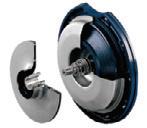

MODEL

with powerful grinding mechanism

18 pump industry | Spring 2017 | Issue 21 www.pumpindustry.com.au PIA MEMBER NEWS | PARTNER SOLUTIONS
Very economically priced cast iron end suction motor pumps to EN733. They are based on the well proven 3M using the same extended shaft motor and stainless steel impeller, but with a cast iron casing.
DG
Since Ebara developed and patented the hydro forming process, our 3' series of pumps have proven to be very reliable, providing exceptional value.
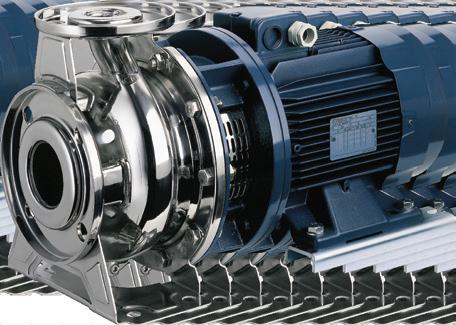

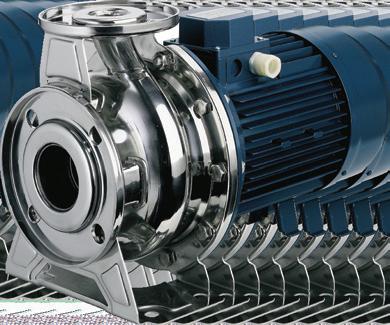


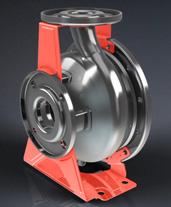
19 www.pumpindustry.com.au pump industry | Spring 2017 | Issue 21 PIA MEMBER NEWS www.ebara.com.au EBARA PUMPS AUSTRALIA PTY. LTD. 7 Holloway Drive Bayswater, VIC. 3153 Ph: 03 9761 3033 sales@ebara.com.au
Looking ahead, going beyond expectations
one piece
volute
stamped volute casing One piece stamping with no weld lines. Supported against pipe strain Model 3M 304 stainless steel with economical extended motor shaft design Model 3LS 316 stainless steel with stub shaft and IEC standard motor MadeinItaly
EBARA STAMPED STAINLESS STEEL PUMPS
hydro formed
Robust
THE FOUR QUESTIONS TO ASK WHEN BUYING A PUMP ENGINE
When you’re in the market for an engine to power your irrigation pump, what should you look for? The short answer is: that depends. With that in mind, we spoke to a few pump dealers about the top four questions to ask before buying an irrigation engine. Here’s what they suggested.
What kind of horsepower do you need?
Your search for the right engine starts with speaking to a pump expert who can determine which will best suit your pump’s needs.
Electric motors can be more efficient, have lower maintenance requirements and are easier to control via automated systems. They are also quieter and more user-friendly. However, they aren’t always feasible in remote areas where grid connection costs are steep.
By comparison, the best diesel motors can deliver sustained performance, great torque and excellent fuel economy – letting you move more water with less fuel and enjoy lower ongoing engine service costs.
What RPM works best for your needs?
Always calculate your power needs exactly, allowing for power losses. Creating a pump curve can help you decide what will work for you.
Remember, your engine must be measured at a continuous rather than variable (intermittent) horsepower rating. Normal engines idle and accelerate while a pump runs at a continuous rate, and your engine needs to match that required horsepower.
For example, selecting a 30kW (40HP) motor doesn’t mean it’s always drawing 30kW – it will only be operating at maximum when the pump flow rate is well beyond the nominal flow rate.
It’s also important to take into account the ambient conditions (e.g. temperature, altitude, humidity) in which your pump will run and how this will affect the system.
What type of drive do you need?

What type of engine/pump control panel do you want?
How will your pump be driven? There’s a wide range of options when it comes to drives – direct drives (inline shaft), pulley drives with v-belts and pulley drives with cam belts. Does your pump engine need a clutch?
A v-belt driven pump can be matched with a smaller engine running at a higher speed and requires a crank on one side to offset the ‘pull’ of the belt. Inline shafts deliver power more directly and efficiently.
Variable speed drives (VSDs) deliver a variety of speeds so your pump runs on the best rate for the water it’s moving.
How long is a piece of string? If you want something simple, your stock standard option is a key switch with warning lights and an engine stop button for low oil pressure or high coolant temperatures.
From there you can customise to your heart’s desire, adding tachometers, hour meters, a 24 hour clock, remote start and even options to control start and view diagnostics via your smartphone.
When you have to depend on reliability, Kubota’s large output four-cylinder
in performance, reliability and durability. Engine
components. To receive the support of a national
call your
20 pump industry | Spring 2017 | Issue 21 www.pumpindustry.com.au INDUSTRY NEWS | PARTNER SOLUTIONS
provide the ultimate
power packs are fully assembled with world class
dealer network for service and spare parts requirements,
nearest dealer now on 1300 582 582 Australia wide.
engines
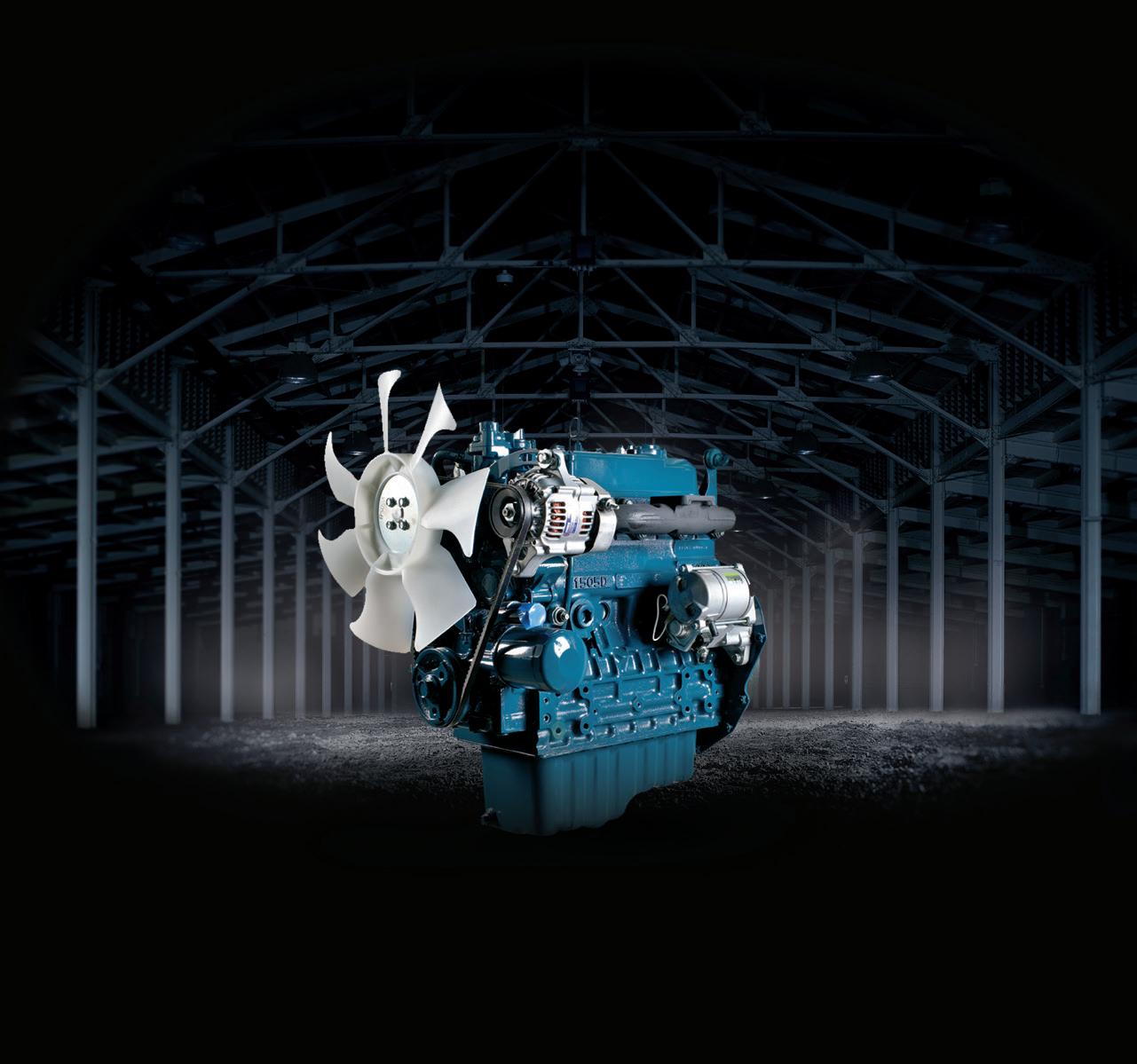
AUSTRALIA WIDE 1300 582 582 *Kubota Australia No. 1 selling off highway diesel engine for 2016 kubota.com.au REPOWER IT! DON’T
Signs of a tired engine? Bring your equipment back to life with a replacement Kubota Diesel Engine, used in market leading excavators, skid steers, mowers and mini loaders around the world. Call now for your nearest dealer
REPLACE IT,

Overcoming the limitations of rigid pipes with layflat hoses
In many applications involving fluid transfer the use of rigid pipe introduces severe limitations which can be overcome by the use of layflat hoses, such as the speed of deployment and retrieval, storage footprint and changing topography. Additionally, the reduction in the number of joints delivers environmental and cost saving benefits, and the ability to install certain products without the use of cranes brings significant health and safety benefits.
Layflat hoses can be used for a wide variety of applications, including mining, military, ship to shore, oil and gas, agriculture, and water transfer, and have a number of advantages over conventional rigid polyethylene, PVC, glass fibre or steel pipes.
Faster deployment and retrieval
As layflat hoses come in long continuous lengths, they can be quickly deployed and retrieved using light duty trailers, flaking boxes or powerdriven reels. Their high flexibility and kink resistance allows natural ground contours to be followed without putting stress on the pipeline and eliminates expensive path-cutting work. Furthermore, fewer joints and faster connections mean reduced labour and equipment costs.
Easier to store and transport
Layflat hoses are lightweight and their small storage footprint reduces transport, and handling requirements and costs. These features offer improved accessibility to more challenging locations.
Low operating costs
Layflat hoses have superior hydraulic performance with lower pressure loss for efficient pumping. They swell in use up to 10 per cent beyond uncharged diameter at maximum operating pressure, enabling more fluid to be pumped.
Longer service life
Layflat hoses are capable of operating continuously at high pumping pressures with minimal maintenance in even the harshest environments. They are tough and durable with exceptional resistance to abrasion and cutting for use on a wide variety of ground conditions.
They have unsurpassed resistance to weathering, suffer no corrosion or scaling, and are resistant to heat, fuels, chemical, ultraviolet, ozone, weathering, hydrolysis and microbiological attack.
Simpler maintenance
Maintenance and repair can be completed in a fraction of the time required for rigid pipe, reducing labour and equipment costs in addition to reduced downtime.

The flexible pipelines solutions provider
Angus Flexible Pipelines is a global leader in providing fluid transfer solutions to a wide range of applications. At the heart of these solutions is Angus layflat hose, which has been instrumental in the successful running of numerous operations in the harshest and most challenging environments globally.
The layflat hoses from Angus Flexible Pipelines are manufactured from high tensile synthetic yarns which are circular woven and then totally encapsulated in a tough elastomeric cover and lining. Different yarns and covers are used for different applications, but what they all have in common is exceptional strength and hydraulic efficiency.
With a global network of distributors and a dedicated Technical Support Team, Angus Flexible Pipelines can help you to identify and develop long-lasting, tailor made solutions to match the specific needs of your business. For over 40 years Angus Flexible Pipelines has invested in research and development and customer service.
22 pump industry | Spring 2017 | Issue 21 www.pumpindustry.com.au
INDUSTRY NEWS | PARTNER SOLUTIONS
For more information, contact Angus Flexible Pipelines on (07) 3256 7624 or visit www.flexiblepipelines.co.uk
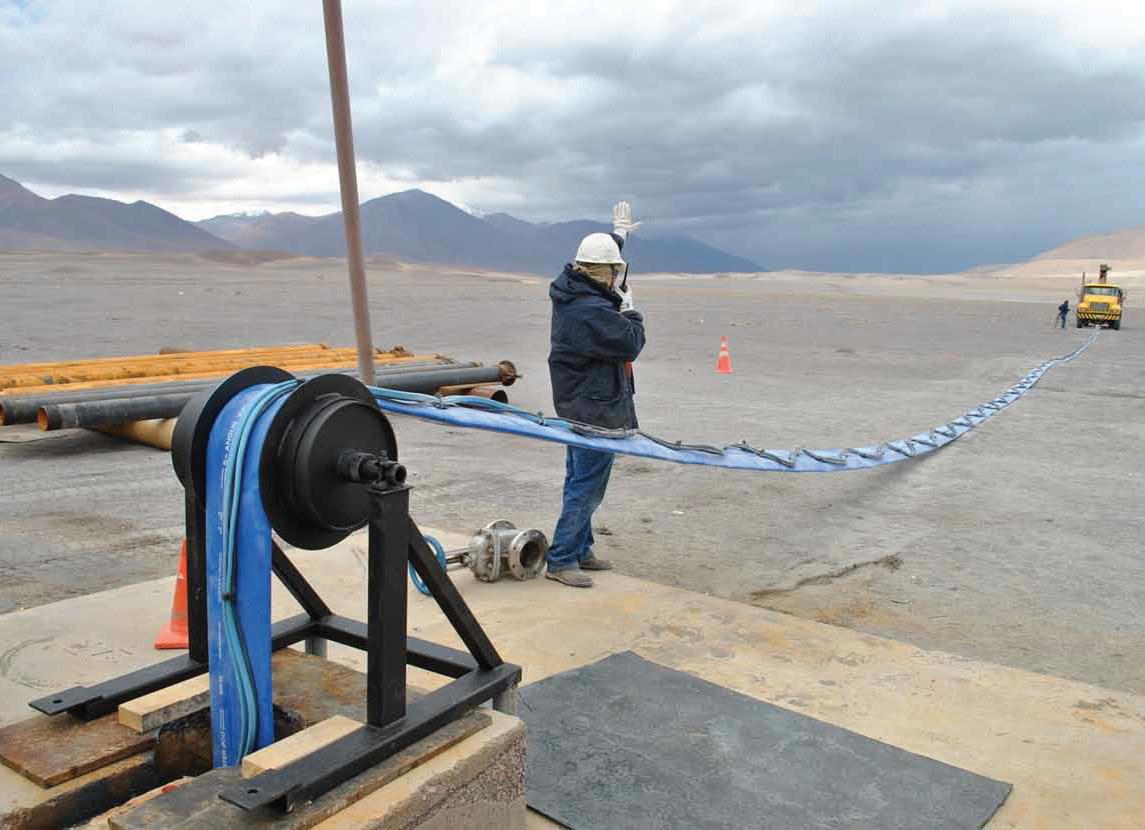
Features
Regulation 31 UK Drinking Water Inspectorate
Regulation 27 Drinking Water Scotland
Total corrosion, microbiological and internal scaling resistance
Long operational life with a 10 year warranty*
High abrasion resistant lining and cover
Superior hydraulic performance with low friction loss for a reduced operating cost
Rapid installation and retrieval resulting in substantial labour and cost savings
Available with a range of reusable field-fittable high security 316 stainless steel couplings and a full range of other accessories
Diameters from 38mm – 200mm
Range includes WM150, WM250 and WM400
Manufactured under Angus Flexible Pipelines
ISO 9001 Quality Management Systems accreditation
Angus Environmental Management System complies with ISO 14001
WARRANTY *10 YEAR INDUSTRY LEADING

The Wellmaster range is the Flexible Rising Main System for all types of ground water extraction and well monitoring operations.
Its simplicity of installation makes Wellmaster the cost-effective alternative to rigid pipe. Wellmaster is manufactured from high tenacity synthetic yarns, circular woven and totally encapsulated in a tough elastomeric polyurethane lining and cover. The riser has an integral textile reinforced rib for location of the power cable strapping system. The larger sizes have two ribs.
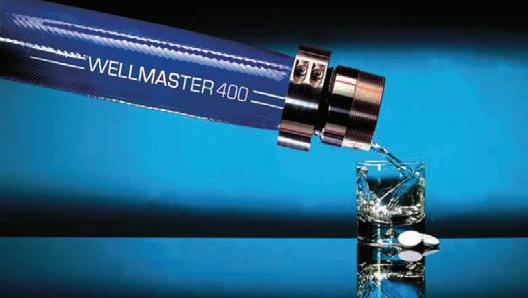

9/67 Depot Street BANYO Qld 4014 Ph: 07 3256 7624 Angus Flexible Pipelines Australia Pty Ltd
* if installed by an Angus approved installer

TTOUGH SUB PUMPS THAT MAINTAIN HIGH HEAD
A new high head, Tsurumi submersible sub pump designed for tough jobs in dewatering and batch plants has been launched by Australian Pump Industries.
A tough pump for tough applications. Tsurumi’s KTZ615 has the ability to handle dirty water while still maintaining high head.
surumi, the world’s biggest manufacturer of submersible pumps, has developed the unit in recognition of the need for tough pumps that have head capabilities of up to 55m.
“Traditionally, dirty water submersible pumps aren’t designed for high head applications,” said Aussie Pumps’ Product Manager, Neil Bennett.
“The new Tsurumi development is innovative in that it used the same philosophies and technologies from the existing KTZ range, but adds extra power and a bigger impeller to drive water even higher.”
A big 6” pump, Tsurumi’s model KTZ615, uses a 15kW motor to achieve its excellent performance. The pump’s maximum flow is 2,800lpm, while its maximum head is an incredible 55m. That high head is achieved with a single piece impeller, not multistage, made from high-chrome cast iron.
The pump has all of Tsurumi’s normal features for heavy-duty dewatering pumps that have made the company a byword for reliability. These include the unique double dual mechanical seals with integrated oil lifter. Those seals run in oil to provide longevity and performance reliability. The unique patented oil lifter keeps oil circulating even if the pump is not running in a strictly vertical position.
They also have a pressure relief port to protect the mechanical seal faces from extreme pressure while simultaneously diverting abrasive particles away from the seal face, which is ideal for mining applications.
Located at the top of the motor, the cable is also a unique feature of Tsurumi as it has a special sealed gland that won’t let water into the motor, even if the cable is damaged or cut.
“Other pump brands allow the water from a cut cable to wick down into the
motor causing catastrophic failures,” said Mr Bennett.
“Tsurumi’s unique cable block is a major leap forward in technology to virtually eliminate water ingress from the top end of the motor.”
The new KTZ is made from high-chrome cast iron and comes with a strainer that is able to handle solids of 12mm. The KTZ series is widely used in mining, tunnelling, quarries, concrete batch plants or for dewatering and piling duties.
The product is widely used in the United States, South East Asia and Europe in tough applications where lighter weight pumps simply don’t last.
“Tsurumi cut their teeth developing dewatering pumps in the 1950s during the rebuilding of Japan,” said Mr Bennett.
“Duties included land reclamation, piling and dewatering. They soon found their way into concrete batch plants as the ready-mix industry took off in Japan.”
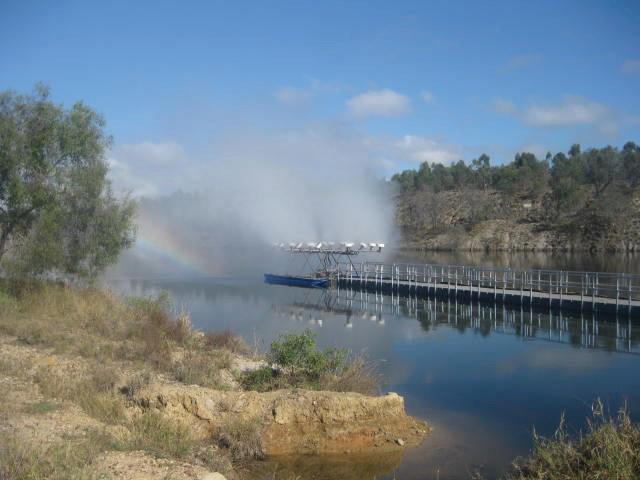
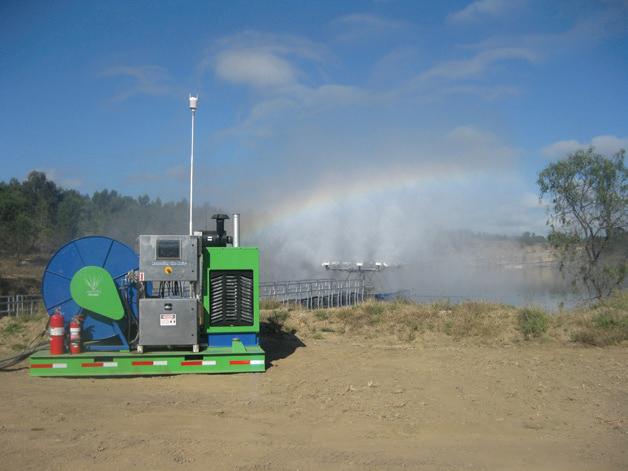

PHONE (08) 8118 6460 ACCELERATED EVAPORATION EFFECTIVE POND LEVEL REDUCTION ace@adlcontrol.com.au w w w adelaidecontrolengineering. c o m Remote monitoring Atmospheric intelligence module Water droplets <100UM 16 head atomises 438 m 3 /day INDUSTRY NEWS | PARTNER SOLUTIONS pump industry | Spring 2017 | Issue 21 www.pumpindustry.com.au 24
www.aussiepumps.com.au
Further information on the new KTZ615, boasting increased flows and higher heads than traditional Tsurumi KTZ dewatering pumps is available from
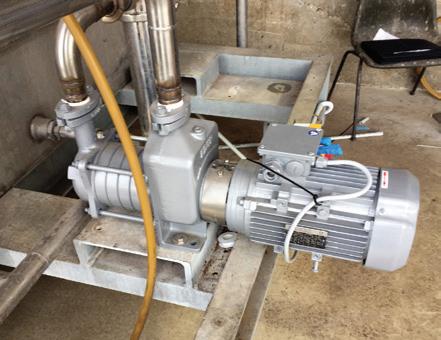
The “conventional” system consists of a centrifugal pump that pulls clean effluent from the DAF tank and feeds it into a pressurised air saturation vessel. A compressor also feeds compressed air into the same vessel and the air saturates into the effluent water.
The water is then fed back into the bottom of the DAF tank where the air comes out of solution to form tiny bubbles which attach to fats and grease in the system and float it to the top of the tank where it is scraped away. The system requires a control system to combine air and water needs, and it requires regular certification of the pressure vessel.
There is also maintenance of the pump, compressor and pressure vessel to
Meat exporter discovers innovative DAF solution
Cedar Meats is a state-of-the-art meat exporter in Victoria, with a continual improvement philosophy. They needed to upgrade their DAF system, but didn’t want to just go for the standard system. They wanted a more energy efficient system, and one that could deliver low running costs for the life of the system.
consider, along with energy consumption of both pump and compressor. Capital costs and running costs are not cheap for this “standard” system.
Chief Engineer at Cedar Meats, Yogesh Mistry, went looking for a solution that did not involve intricate and delicate control systems, and did not need ongoing Worksafe certification for pressure vessels. He contacted Hydro Innovations to get information on the EDUR DAF pump he had read about.
EDUR, a German Pump manufacturer since 1927, has developed a multi-stage “multiphase” pump capable of handling a gas/water mixture, making it ideal as a DAF pump. The pump draws clean effluent from the DAF tank, and at the same time, draws in atmospheric air on
the suction side of the pump.
The pump sheers and mixes the air with the water, and under pressure from the multi-stage pump, air saturates into the effluent water. The water is then pumped into the bottom of the tank, where the air comes out of solution, as in conventional systems. No compressor or air saturation pressure vessel is needed.
Mr Mistry was impressed with the simplicity of the system and promptly arranged the purchase of an EDUR DAF pump. He has been pleased with the positive results, which include a higher rate of solids removed; less power used for the job which reduces power costs; and less complicated controls; a low maintenance future for the system.


25 www.pumpindustry.com.au pump industry | Spring 2017 | Issue 21
INDUSTRY NEWS | PARTNER SOLUTIONS

The pump industry relies on expertise from a large and varied range of specialists, from experts in particular pump types to those with an intimate understanding of pump reliability; and from researchers who delve into the particulars of pump curves to experts in pump efficiency. To draw upon the wealth of expert knowledge the Australian pump industry has to offer, Pump Industry has established a panel of experts to answer all your pumping questions.
This edition of Ask an expert will cover two common concerns: pricing and future development of progressive cavity pumps.
Q: When examining total life cycle costs how do progressive cavity pumps (PCP) compare to other technologies? Isn’t the purchase price the most important factor?
A: Between PCP manufacturers, purchase prices can widely differ. However, progressive cavity pumps have a lifetime of around 15 – 20 years, which means the largest part of total lifecycle costs is energy consumption, repair, maintenance and downtime, not the purchase price. Some focus points for industries are shorter downtimes while others emphasise low maintenance
costs or the lowest possible energy consumption.
PCP manufacturers work tirelessly to provide technical portfolios that deliver innovations for reduced lifecycle costs over the complete lifetime. Special care is taken when selecting pump speed and materials, giving due consideration to pumped media, viscosity, solids content and abrasiveness. New buyers often make the mistake of saving a few dollars on the initial purchase, only to find their maintenance costs have soared out of control due to an inappropriate pump selection.
To further reduce lifecycle costs, PCP manufacturers are designing maintenance friendly pumps which offer reduced energy consumption, ease of maintenance, extended service life and significantly reduced lifecycle costs. Some designs even have unique rotor and stator features to allow for optimum re-clamping when the flow rate reduces due to wear.
You can gain significant advantages for your application over its lifetime by choosing progressive cavity pumps.

26 pump industry | Spring 2017 | Issue 21 www.pumpindustry.com.au ASK AN EXPERT
Smart Conveying Technology - An example of a progressive cavity pump with easy maintenance and stator re-tensioning capabilities.
Q: How are progressive cavity pumps (PCP) keeping up in this new digital age?
A: PCP manufacturers realise that their research and development needs to focus on digitisation, smart pumps that communicate with control systems, and even apps that will put all the necessary pump information right at their customers' fingertips.
Many now offer variations of smart pumps and systems. These pumps have the normal benefits of PCP, such as minimal pulsation, low shear, flow unaffected by pressure/media variations, but with additional intelligent designs. For example, some of these customised pumps can combine dosing and pumping with up-to-date control concepts while also offering
integration into higher level controls and automation systems. Extra safety features and measurements of process variables enable increased control over the pump/system and quick feedback from the pump itself.
Contact a progressive cavity pump expert, to receive a customised and intelligent design which offers you greater control over your process.

Smart Dosing Progressive Cavity Pump showing typical options including flow meter, pressure indication, dry-run protection and drive with integrated smart speed control.


Peter Vila, Managing Director of SEEPEX Australia, is a progressive cavity pump expert. He has been involved with pumps for over 35 years. Peter spent the first five years repairing pumps and the following 30 years in technical sales, 15 of which have been with SEEPEX progressive cavity pumps.
For more information on progressive cavity pumps, please contact SEEPEX Australia on (02) 4355 4500 or at info.au@seepex.com
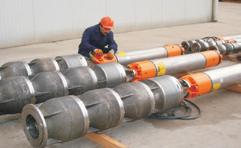



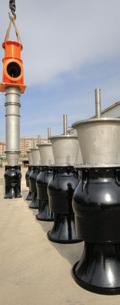
VERTICAL TURBINE PUMPS
• Flows to 7,500 L/Sec
• Heads to 500 m
• Power to 1000+ kW
• Temperatures to 150°C
• Bowls Diameter up to 45 inch
Design Advantages
• Exceptional engineering quality
• Highly efficient hydraulic design
• Heavy duty component castings
• Cast discharge heads
• In-built thrust bearing with anti-rotation arrangement
• Standard IEC electric motors
• Superior quality column assemblies
• Materials of construction options
• Shaft sealing options
• Engine drive options
Applications
• Irrigation
• Water Supply
• Process water
• Geothermal
• Cooling towers
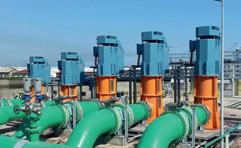
• Fire protection
• Marine
• Water treatment
• De-watering




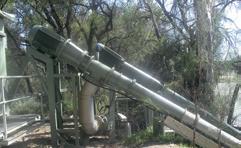
27 www.pumpindustry.com.au pump industry | Spring 2017 | Issue 21
ASK AN EXPERT
TASTE THE ENGINEERING
Exclusive Australian Distributor
DELIVERING PUMPING SOLUTIONS Ph: 1300 4 BBENG www.brownbros.com.au 05/17
Layne Bowler vertical turbine pumps have a proven record under the most demanding and toughest of conditions.
WATER OPERATORS RECOGNISED FOR BEST TASTING WATER
Goulburn Valley Water took out first place at the 2017 Ixom Victorian Water Taste Test competition at the WIOA conference in Bendigo. Here, we take a look at the history of the competition, the importance of recognising Australia’s water operators and what it takes to have the best tasting water in the state.
The Ixom Victorian Water Taste Test is an annual competition that selects the highest quality drinking water in Victoria as a way to recognise local water service providers and their ability to supply safe water to the community.
The competition began in 2012 when Ixom partnered with the Queensland Water Directorate to hold a water taste test as a fun way to encourage operator and council engagement. After holding the first competition, Ixom was inundated by people calling to ask how they can be involved in the initiative.
A year later, WIOA hosted the competition at its Bendigo trade show and a tradition was born.
Ixom Training Manager, George Lech, said he believes the competition became so successful so quickly because of the well deserved recognition it provides Australia’s water operators.
“[The competition] celebrates the hard work that operators do day-to-day in providing absolutely clean pristine water. It is really a testament to them, not only the people who make the potable water, but also the people involved in the wastewater treatment as well. Their role is just as critical because they are able to treat the water to a fantastic standard,” Mr Lech said.
“That’s what WIOA, the Queensland Water Directorate and Ixom are really proud to be a part of this, to recognise
and promote the sort of work that these operators are doing.
“They don’t do it for fame, they don’t do it for glory, they don't do it for really great uniforms and medallions, they do it because they’ve got that community spirit to ensure the water they produce is safe and fit-for-purpose.”
Craig Mathisen, WIOA Chief Operations, said the general public would be surprised to learn the complexities involved in delivering high-quality water to taps each day.
“The competition is a testament to the excellent quality of Australian water, and to the diligence and commitment of the operational employees who deliver it to our communities,” Mr Mathisen said.


The Dodge Vertical Gearmotor provides an alternative to common vertical pump drive technologies and offers significant benefits when compared to other systems. The Vertical Gearmotor is built on a standard low pole count motor platform utilizing proven Dodge planetary gear technology. This results in a smaller, lighter, more cost-effective and highly efficient package.
www.abb.com/mechanicalpowertransmission

28 pump industry | Spring 2017 | Issue 21 www.pumpindustry.com.au
WIOA
Highly efficient and
applications? ABB Australia Pty Limited Tel. 1800 222 435 E-mail: abb.dodge.sales@au.abb.com Absolutely. VGM half page ad for Pump Industry mag 2017.indd 1 3/8/2017 12:41:07 PM
cost-effective solutions for large pumping
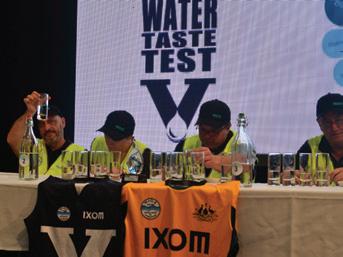

“We want to celebrate our unsung heroes - the water operators and the maintenance crews who work all year round to ensure we have high quality water, which is essential to keep us alive.”
The competition heats up
All water organisations in Victoria are invited to nominate one preferred sample of tap water for inclusion in the taste test competition. The judging begins with an intense round of heats pinning entrants against each other as they fight it out to be named the best water in the state.
“We hold a series of heats and what we try to do is get the operators involved. So we would have a whole series of samples, they would taste them and they would rate them. They give them a number and the ones that scored highest then go in as finalists,” Mr Lech said.
“The water quality can vary and, oddly enough, even though you would think it’s only water how can you be able taste the difference, but you can depending on the water source. You might get something that's coming from an artesian well and from that you get a
lot of dissolved minerals and you might be able to taste that it’s actually got a mineral type of a taste.
“You’ve got others that might have surface water, and you might have organic matter in there, and you actually start to taste that slight peat type of a taste. Which is all fine, all acceptable, and all totally safe.”
At the 2017 Ixom Victorian Water Taste Test in Bendigo, the top four samples were held under scrutiny by a panel of water connoisseurs. The samples were judged on a point scale of good to best based on clarity, colour, smell and above all, taste. The scores were aggregated and the winner was the sample that achieved the highest combined score.
Merrijig takes out first place
After many glass swirls and thoughtful sips, this year’s Victorian taste test crowned Goulburn Valley Water’s Merrijig Treatment Plant as the best tasting water in the state. Merrijig’s water sample beat out the likes of Coliban Water, Yarra Valley Water and Melbourne Water.
Goulburn Valley Water Manager of Operations, Steven Nash, said they
felt very proud to be named this year’s winner.
“This is the second time we’ve won in the last three years. So we sort of went on our lessons learned from when we were successful. We won with Marysville two years ago, which was a brand new micro-filtration plant working in an Alpine region, so we had a great rural water quality there with the Stevenson River. Then the operators in the area said to me, ‘We think the water at Merrijig is just as good’,” Mr Nash said.
“Merrijig is located between Mansfield and Mount Bulla, and supplied by an alpine region through the Delatite River. It’s a similar plant to Marysville, as they’re both micro-filtration.
“I had inspected the plant probably a month ago. It was in great condition and the operators were taking a lot of pride in the plant so I had a lot of confidence in selecting the water for the taste test for this year.”
Goulburn Valley Water and its sample from Merrijig will go on to compete in the national competition held on 18 October 2017 in Launceston. The winner of the national competition will then represent Australia at the world championships in the United States.

29 www.pumpindustry.com.au pump industry | Spring 2017 | Issue 21 WIOA Specialising in custom design, manufacture, repair and service of centrifugal pumps for over 30 years
Complete range of API 610 (ISO13709)
Hydraulic and mechanical design
Custom engineering, retro-fit, redesign
Performance testing • Service and repair UNITED PUMPS www.unitedpumps.com.au T: +61 3 9464 9500 31 Western Avenue, Sunshine Victoria 3020, Australia E: unitedpumps@unitedpumps.com.au
•
•
•
•
George Lech, Kathy Northcott, Marcus Boyd, and George Wall judging the Ixom Victorian Water Taste Test in Bendigo.
Pump Genius WEG
PUMP INTELLIGENCE TO YOUR SYSTEM
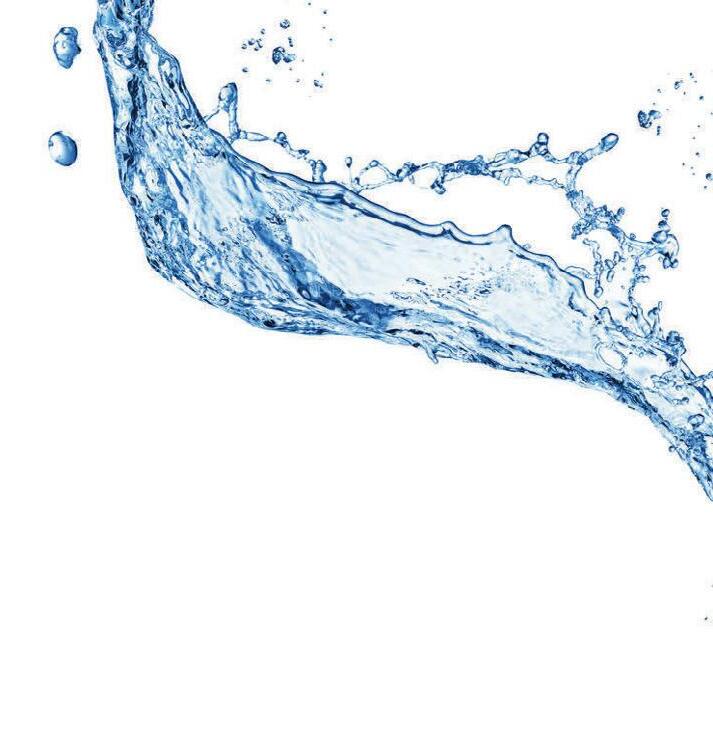
The Pump Genius is a customizable feature of WEG drives that enables your standard VSD to become dedicated for pumping systems. It ensures accurate pressure / flow control throughout the processing cycle, starting with raw water and its usage, ending on wastewater treatment.
With an easy-to-use programming wizard, Pump Genius helps you to minimize downtime and maximize energy savings Everything you need is available through selecting one of the three options that best fits to your application.


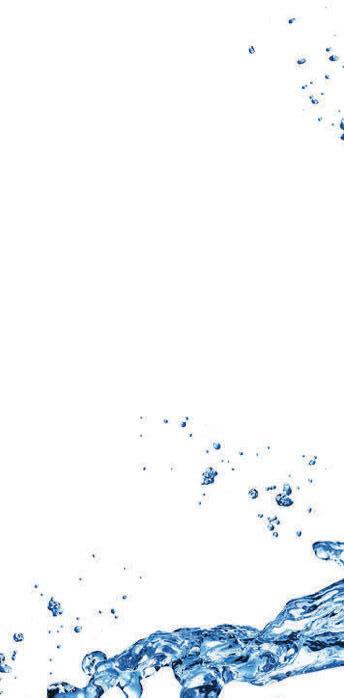
Submersible pumps Desalination plants Water distribution Wastewater plants Irrigation systems simplex multipump multiplex
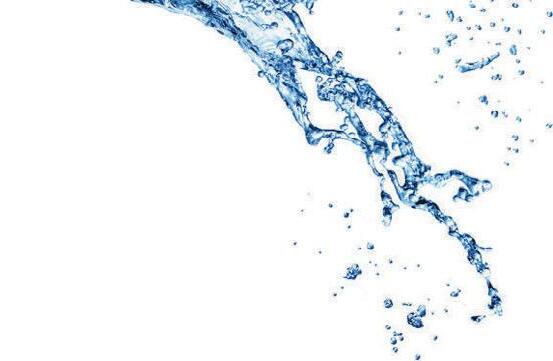
simplex
The Simplex software adds ideal features to the VSD for single pump control.
g Pipe Charging Mode
g Sleep & Wake-Up Modes
g Dry Pump Protection
g Broken Pipe or Leakage Detection
g Pump Cavitation Monitoring

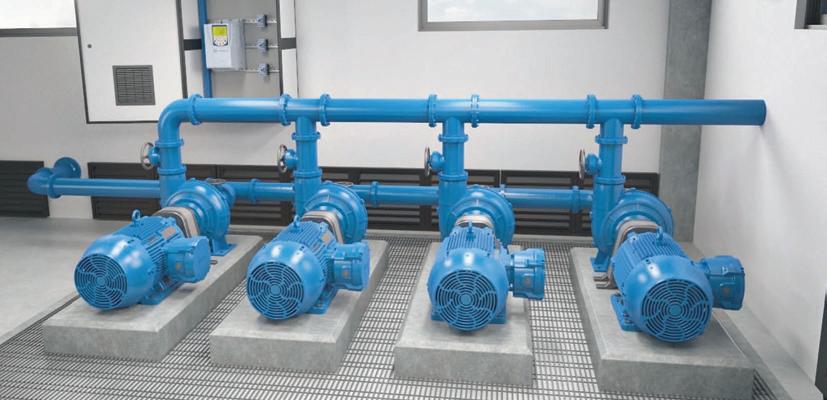
multipump
Multipump is the best choice when a pumping system needs to be integrated with a costeffective solution. It enables one single VSD to control up to 5 pumps via DOL, soft-starter or other starting methods.
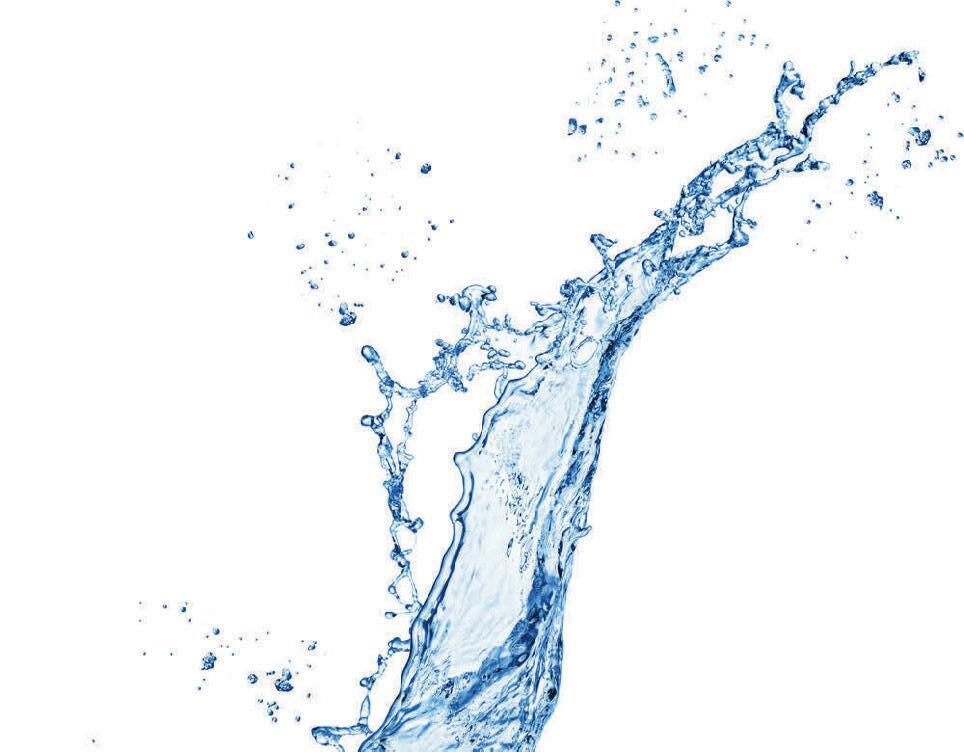
multiplex
Multiplex software is the most complete solution to accurately control flow and pressure with high reliability.
The VSDs control, monitor and manage the entire system on their own. There is no need for additional PLC, HMI or any external devices thus installation costs can be optimized.
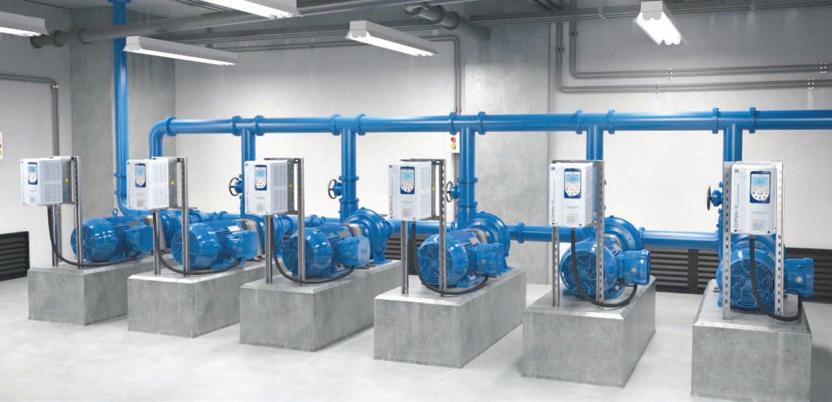
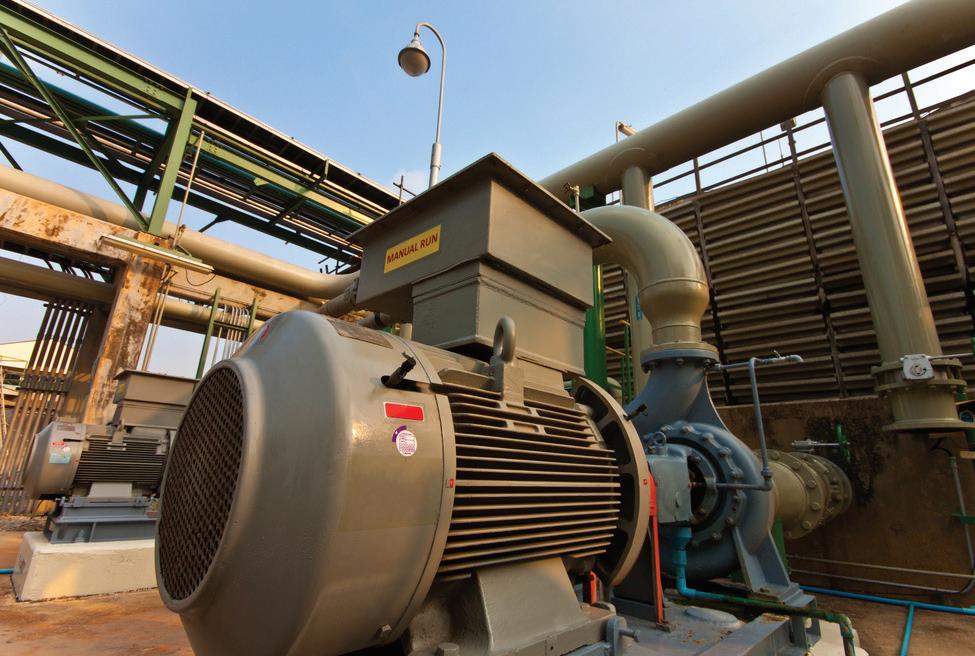
CALCULATING ENERGY SAVINGS AND PAYBACK
by Joe Evans, Pump Ed 101
Energy efficiency and reduced consumption are very important issues in the pump and motor marketplace. Over the long term, the cost of electricity will
regardless of our actions.
This will be due to increasing fuel costs and inflation, but if programs that limit CO2 emissions are enacted, energy costs will skyrocket.
I belong to that group of those “not so green” scientists who do not believe that anthropogenic CO2 emissions have any measurable impact on global temperatures. That said, I am completely in favor of reducing energy consumption but for a very different reason – economics.
There are several ways to reduce energy costs in pumping applications. The first and probably most important
is the application design. Well designed systems are usually far more efficient than poorly designed ones.
Also, increasing pump hydraulic efficiency at the H/Q point reduces the BHP required. A reduction in BHP reduces the energy required per gallon pumped.
Motor efficiency can also have a significant impact. Increased motor efficiency reduces the energy required to produce a certain BHP. When taken together, application design and wire to water efficiency can significantly reduce electrical consumption.
continue
to
increase
There are, however, times when pump efficiency can take a back seat to other important issues. For example, the efficiency of a vortex sewage pump can be 25 points lower than a standard non-clog pump with a similar flow and head.
But, if plugging is a problem and you have to pull that non-clog weekly, your maintenance costs will far exceed the increased power cost of the vortex pump. Even if a lower efficiency pump is the best choice for an application, a higher efficiency motor will still decrease the overall operating costs.
32 pump industry | Spring 2017 | Issue 21 www.pumpindustry.com.au
ENERGY EFFICIENCY
Figure 1 is an example of my Wire to Water Energy Calculator. The calculator allows you to evaluate the electrical consumption of various pumps with the same motor, various motors with the same pump, or various combinations of each. It also provides a simple “payback” analysis when you compare two different pump and motor combinations.
After entering the required data, the calculator will produce a number of results including the BHP required, wire to water efficiency, and the annual energy cost. KW and cost per thousand gallons pumped is also displayed.
When you compare two different pump/motor combinations and enter the cost of each, the calculator will produce a simple payback analysis that displays annual savings and payback in years.
Payback is simply the pump/motor cost differential divided by annual savings. Although a present value analysis may be needed in some instances, simple payback will usually provide the information you need to make a selection decision.
Wire to Water Energy Calculator
REQUIRED DATA
when comparing two pumps, place the lower efficiency pump/motor in the Pump 2 column.
Joe Evans has been in the pumps industry since 1986 and is passionate about the sharing of knowledge within the industry.
To read more of his insights into the world of pumping, visit www.pumped101.com
Uncompromising Blockage Protection
As the rags and solids in wastewater increase, you need innovation that keeps pumping stations problem-free. The submersible sewage pump type ABS XFP from Sulzer, with its versatile range of Contrablock Plus impellers, is insurance against downtime that’s easy to acquire.
The impellers’ superior rag handling and minimum free solids passage of 75 mm mean you spend far less time on troublesome pumping stations. Switching from an existing pump is easy, and you save energy immediately with the XFP’s premium-efficiency IE3 submersible motor – which Sulzer pioneered and provides as standard.
For more innovation in wastewater collection, visit www.sulzer.com
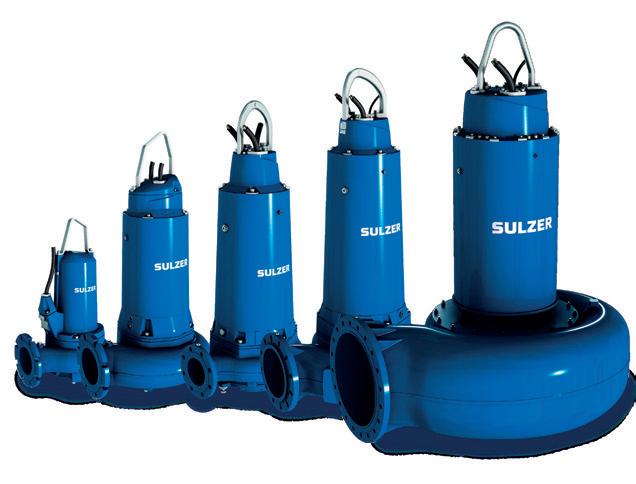
33 www.pumpindustry.com.au pump industry | Spring 2017 | Issue 21 ENERGY EFFICIENCY
PUMP 1 PUMP 2 Pump Operation - Hours/Day 8 8 Note:
Pump Operation - Days/Year 365 365 Pump Flow - GPM 1000 1000 Pump Head - Feet 88 88 Pump Efficiency - % 80% 74% Motor Efficiency - % 94.1% 87.5% Energy Cost in $/KWH $0.10 $0.10 RESULTS PAYBACK BHP At Design Point 27.8 30.0 Annual Savings - $$ $1,045.73 Wire to Water Efficiency - % 75% 65% Annual Savings - % 13.99% Annual Energy Cost $6,430.28 $7,476.00 Cost of Pump 1 $9,000.00 KW Per 1000 Gallons Pumped 0.367 0.427 Cost of Pump 2 $7,200.00 Cost Per 1000 Gallons Pumped $0.037 $0.043 Payback - Years 1.7
Figure 1.
VSDs LEAD IRRIGATION EFFICIENCY MEASURES FOR GUNNEDAH CROPPING ENTERPRISE
By Gerry Flores, David Hoffmann, Leigh Rostron and Phil Shorten, NSW Farmers
Working with the NSW Farmers’ Energy Team, the Kensal Green farm in Gunnedah identified significant energy saving opportunities over the short, medium and long term. Heading the list of opportunities was the use of variable speed drives (VSDs) on pumps, as well as proper ballasting of the farm’s new tractor.
Just south of Gunnedah is Kensal Green, an irrigated farming property that grows cotton, wheat and other grains. Owned by Tagmor Ag, and managed and operated by farmer Scott Morgan, the farm uses no-till planting and is located on a historic flood plain. 460ha of the 720ha property are irrigated. During periods of flooding, or when there is sufficient moisture in the soil, the farm implements ‘double cropping’, meaning that after harvest, a crop is planted directly on top of the previous crop to take advantage of the latent soil moisture.
As in much of the country, water is a scarce resource at Kensal Green. To maximise his water allotment and minimise costs for water use, Scott
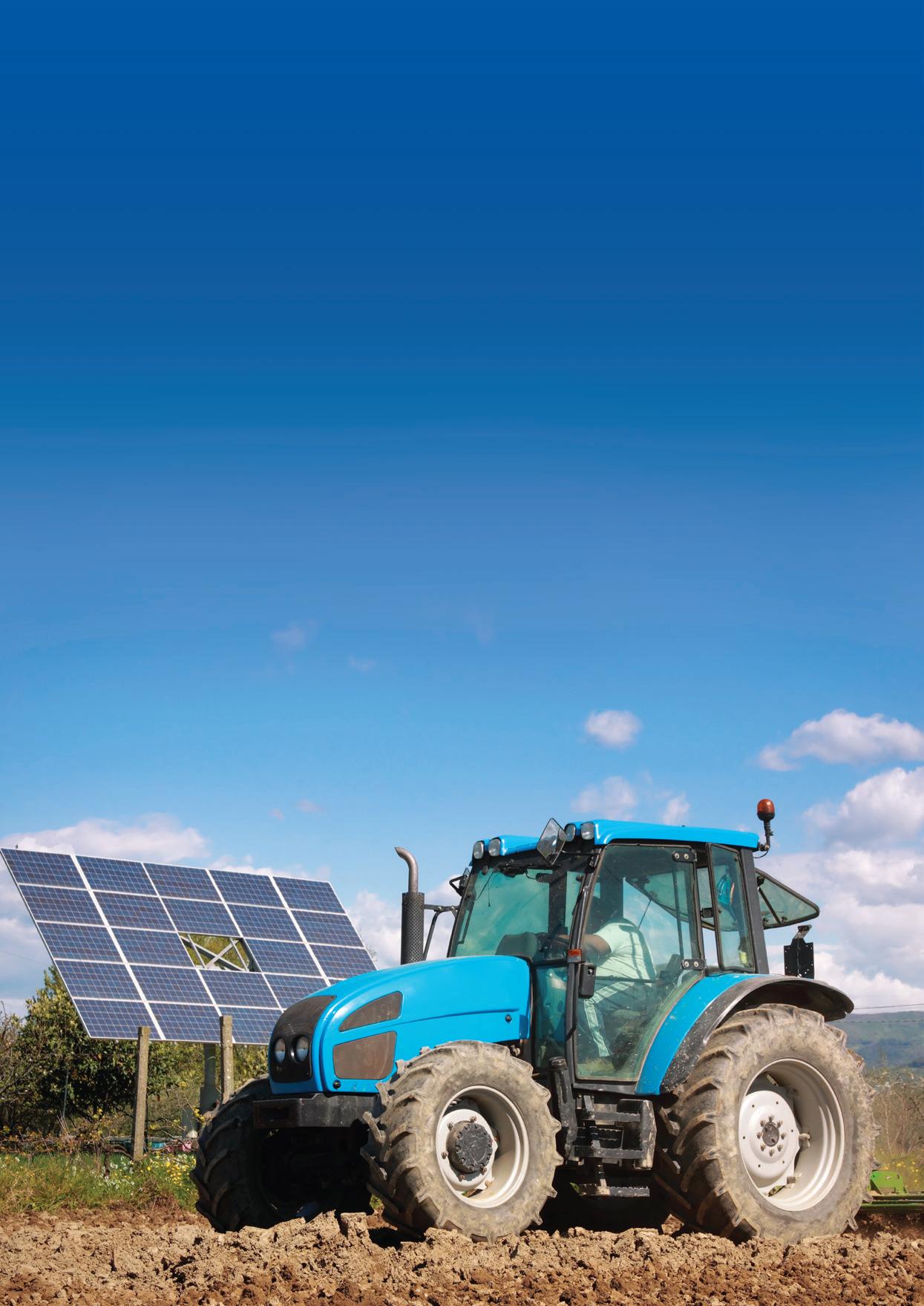
uses moisture probes to prevent overwatering and has undertaken work to ensure low seepage from his dams and reservoirs. Scott also uses as much water as possible from the free-flowing river adjacent to his property when this water is available.
With a long-standing interest in energy efficiency, Scott retrofitted a VSD on his number 1 bore and installed two 10kW solar PV systems. To drive further cost reduction opportunities, Scott contacted the NSW Farmers Energy Team to participate in the energy innovation program.
Working with Scott, the NSW Farmers’ team developed an energy profile of Kensal Green’s operations, then
identified and prioritised efficiency opportunities and, finally, created a plan for implementing efficiency projects over time.
ENERGY PROFILE INSIGHTS
The property uses approximately 160,000kWh of electricity and 40,000 litres of diesel per year for tractors, other vehicles and pumps (used to run various bore, transfer, and storage and lift water pumps for irrigation) (Tables 1 and 2).
Scott assembled information on all of the farm’s energy-using equipment and estimated fuel/energy use per year (Table 3).
The farm has three John Deere tractors: a new 235hp, a five-year-old 235hp, and a 120hp from 1995. It also uses six pumps.
34 ENERGY EFFICIENCY

Did you know?
Pumps that experience highly variable demand conditions are often good candidates for VSDs. Variable frequency drives (VFDs), a common type of VSD, use electronic controls to vary the frequency and voltage supplied to the motor, which regulates the motor speed and, in turn, adjusts the pump’s output. As opposed to common flow control methods, such as throttling valves or bypass systems, the principal advantage of VSDs is that they better match the fluid energy that the system requires with the energy that the pump delivers to the system. The pump’s power is proportional to the cube of speed; therefore a significant reduction in power (and energy savings) can be achieved by reducing the speed of the motor. In fact, slowing the speed by 20 per cent can save up to 50 per cent of the electricity.
Two of these are bore pumps (both 75kW, both electric); two are used for storage (a 60hp and a 100hp, both diesel powered); and there is a 140hp diesel-powered river pump and a 37kW electric re-lift pump.
The diesel pump on the Mooki River pumps water into the channel leading to crops or to the lift pump for it to be stored in the reservoir.
Kensal Green has a roof-mounted PV system (on a barn) and uses conventional silicon cells, while another PV system is groundmounted beside an irrigation channel and uses thin film amorphous silicon cells.
Identifying and prioritising costsaving opportunities Scott referred to the fact sheets provided by the NSW Farmers Energy Team and, with assistance from energy consulting group Energetics, generated a list of potential cost-saving opportunities. This list (Table 4) includes simple paybacks that were quantified using calculators available through
A VSD can alleviate the need to throttle the flow (and lose energy) or allow the water to be pumped more slowly and reduce the frictional energy loss. Soft start and stop capabilities also reduce mechanical and electrical stress as well as the risk of water hammer.
VSDs are not practical for all applications. For example, adding a VSD to a system with high static head or one that needs to operate for extended periods under low-flow conditions will not provide great energy savings. Energy savings can vary significantly depending on the system characteristics and the type of operation; typically, they range from five per cent to 50 per cent.
the Energy Innovation Program.
Although more than $40,000 in potential fuel and electricity savings were identified, it was unrealistic to expect Scott and his small team to be able to progress every opportunity.
Therefore, a prioritised list of projects was developed using business criteria that reflected Scott’s farm plan. The criteria included cost reductions, decreasing his use of diesel, and having a sevenyear maximum payback period for any investments.
VARIABLE SPEED DRIVES (
VSDs)
Prior to his involvement with the Energy Innovation Program, Scott Morgan retrofitted a VSD on one of his bore pumps in pursuit of energy savings. The energy consumption of this bore pump will be analysed regularly with a view to refining the specific savings it enables (compared to the previous operation). However, expectations are that slowing the speed of the motors by 20 per cent
has the potential to save Scott 50 per cent of his pumping costs.
Extending the use of VSDs to two additional electric pumps, in addition to the one that Scott had already modernised and is using, was another opportunity for him to make energy savings on-farm.
Variable speed drives on electric 75kW bore pump and 37kW electric re-lift pump
VSDs reduce power draw at times when the pumps do not need to run at full power. The identified energy savings are outlined in Table 5.
Tractor optimisation (ballast and tyres)
Scott also set up a new spray tank for his tractor. Given the driving practices of his operators, and management of tyre pressures and ballast points, it was estimated that savings in fuel consumption of approximately 10 per cent could be made to his fleet of tractors (Table 6).

NCBK Series

SKD Series

NCA Series

35 ENERGY EFFICIENCY
pump industry | Spring 2017 | Issue 21 Ph: 1300 4 BBENG www.brownbros.com.au DELIVERING PUMPING SOLUTIONS 05/17
End suction pumps with dimensions exceeding EN 733
Split casing pumps
End suction pump with open or channel impeller Innovative solutions wherever high pressure and large flows are required. Contact us today about your requirements. When high head and high flows are required look no further than this quality Italian made range. Welcome to the big end of town. Specifications • Flows to 2300m³/h • Head to 97m • Exceeds EN733 (DIN 24255 standard) Specifications • Flows to 5000m³/h • Head to 220m Specifications • Flows to 400-2200m³/h • Head to 15-52m Brown Brothers Engineers Australia are expanding our capabilities with another quality Italian pump manufacturer. In addition to the current world leading brands we can now offer the above range of pumps from SAER Elettropompe S.p.A.
Evaluating the potential of solar power
Pumping water for irrigation is an energy-intensive process and requires a large supply of available power. Offsetting a portion with solar can provide energy cost savings and reduce farm reliance on traditional fossil fuels. Depending on pumping schedules and requirements, pumps may be able to run on either 100 per cent solar power or a combination of solar/diesel or solar/grid electric power, with options to include battery storage. Estimated upfront costs for Scott’s pumping needs are $100,000.
For Kensal Green, existing solar panels generate electricity which is fed back to the grid under the NSW feed-in and tariff solar scheme. Additional solar PV could help offset diesel costs for irrigation pumping. Expected yearly savings of approximately $11,871, with a simple ROI of 8.4 years, are possible.
Because of the nature of pumping demands on Kensal Green farm, these numbers would likely include a much longer payback period, as pumping demand is very energy intensive but is limited to approximately three months of the year. At this point, because of the nature of solar power offsetting demand loads, this measure is less financially viable.
Another consideration for solar-based pumping is that water must be used immediately or there’s a risk that significant amounts will be lost via evaporative effects or seepage losses from the current water reservoir. Additional costly remedial works may be possible to allow greater storage times but still leave evaporative losses as a key concern, especially when water pumped from the bore is subject to the site’s yearly water allocation.
TOTAL POTENTIAL SAVINGS
Scott’s team used the energy innovation templates provided by NSW Farmers and Energetics to develop an action plan to progress his priority projects.
EMBEDDING ENERGY EFFICIENCY INTO FARMING OPERATIONS
The action plan Scott intended to implement at Kensal Green identified energy-efficiency opportunities and allocates projects over the short, medium and long term.
Incremental steps are the key to a workable action plan
In the short term (within 12 months), Scott pursued adaptive driving practices, ensuring that all the farm’s tractor tyres are inflated adequately and that the ballast set-up of tractors is optimal for critical operations.
Like 50 per cent of farmers questioned under this program, Scott believed his operators could do more to apply adaptive driving practices, such as using ‘Gear-Up-Throttle-Down’, to maximise efficiency and engine RMP. He also began to log fuel use in order to understand better where and how fuel was being used. Training courses with a potential return of $2,200 (given Scott’s current tractor use) are available for less than $200. Other savings are available in proper ballast set-up and tyre pressure adjustments that would bring potential savings of $1,700. This compares with a cost of around $800 in additional maintenance and ballast adjustments when switching implements (spraying to sowing, et cetera).
Medium-term opportunities (two to three years) included advanced water-monitoring controls to improve
irrigation effectiveness, and blending natural gas into diesel-driven pumps and tractor engines to help them run more efficiently and on a lowercost fuel mix. VSDs in this case are considered medium-term as Scott prepared his budget for the next season. Voltage optimisation is also considered a medium-term opportunity, as investigation into the power rating of all equipment, especially motors, is necessary to ascertain potential savings.
Long-term opportunities (eight to ten years) included incorporating localised solar PV into power pumps, and examining the potential of powering pumps and engines using biogas or biofuels sourced from local on-farm waste or from nearby agricultural operations.
36 pump industry | Spring 2017 | Issue 21 www.pumpindustry.com.au ENERGY EFFICIENCY
Fuel Type Consumption (p.a.) Units Conversion to GJ factor GJ Cost Cost per Unit Cost /GJ Diesel 41,759.00 litres 0.0386 1,611.90 $62,220.91 $1.49 $38.60 Electricity 163,228.63 kWh 0.0036 587.62 $42,500.00 $0.26 $72.33 Total/Averages: Total: 2199.52 Total: $104,720.91 Average: $0.88 Average: $55.46
Table 1. Kensal Green’s energy breakdown by energy type.
Type Purpose Energy Used (GJ) Diesel Tractors & backhoe 1,021.086 Diesel Lateral irrigator 294.055 Diesel River, storage and transfer pumps 221.024 Diesel Farm utes 75.733 Electricity Bore and lift pumps 548.023 Electricity Homestead and other 39.600 Totals Total: 2,199.52
Table 2. Kensal Green’s energy breakdown by end-use purpose.
Fuel
Equipment Description
JD 8130 235 hp (5 years old)
JD 8235R 235 hp (new)
JD 7800 120 hp (95 model)
13,560.00 litres
NA (not used yet)
Diesel 3,744.00 litres
JD Header 9500 120 hp (98 model) Diesel 2,921.00 litres
JD Picker 9970 120 hp (98 model)
Sub bore pump electric motor #1 75kW (4 years old)
Sub bore pump electric motor #2 75kW (3 years old)
Re-lift pump China 16" electric motor 37kW (8 years old)
Homestead and other (20 years +)
Storage pump 20" axial flow Volvo a100 !00 hp (8 years old)
Storage pump 12" china Deutz 60 hp (3 years old)
River pump 20" china Volvo TD100 140 hp (8 years old)
BackHoe
irrigator (2 years old)
utes (12 years old)
Table 4. Identified efficiency opportunities and their expected savings/costs.
5,981.00 litres
75,812.33 kWh
63,551.06 kWh
12,865.24 kWh
11,000.00 kWh
1,908.67 litres
1,908.67 litres
litres
litres
litres
1,962.00 litres
Table 5. Expected savings and costs for VSD opportunity.
Estimated upfront costs
Expected yearly savings
$22,886 (inclusive of purchase of new variable speed pump drives & labour and installation costs)
$6,963.81 (expected 35% savings from current pumps’ operation) Simple ROI 3.3 years
The ROI and savings figures are based on existing electricity prices and do not take into account future price fluctuations or the opportunity for eventual electric generation from non-grid sources (wind, biogas, solar). For more information on this measure, please see the NSW Farmers fact sheet on variable speed drives on pumps.
Table 6. Expected savings and costs for ballast & tyre optimisation opportunity.
Estimated upfront costs ~$1,000 (estimated costs of courses, labour, tyre pressure gauges and leasing tractor weigh pads)
Expected yearly savings
$3,919.92
Simple ROI 2 months
Notes
The ROI and savings figures are based on existing fuel prices and do not take into account future price fluctuations. For more information on this measure, please see the NSW Farmers fact sheets on tyre pressures and ballasting for efficiency.
Case study courtesy of aginnovators.org.au. To read the full case study visit http://www.aginnovators.org.au/initiatives/energy/case-studies/reduce-speedreduce-cost-variable-speed-drives-pumping-systems-lead-irrigation-efficiency Or for more information about energy and pumping in agriculture, visit http://www.aginnovators.org.au/project/solar-powered-pumping-initiative
37 www.pumpindustry.com.au pump industry | Spring 2017 | Issue 21 ENERGY EFFICIENCY
Table 3. Kensal Green’s register of energy-using equipment.
Equipment
Energy/Fuel Type Qty
Energy/Fuel
p.a.
Description
of
use
Diesel
Diesel
Diesel
Electricity
Electricity
Electricity
Electricity
Diesel
Diesel
Diesel 1,908.67
Diesel 247.00
Lateral
Diesel 7,618.00
Farm
Diesel
580K
Measure Energy savings Energy cost savings ($) Up-front cost ($) Payback (years) QW: Adaptive driving 2,194 $3,272 $0 0 QW: Ballasting & tyre pressures 1,141 $1,701 $851 1 QW: Vehicle maintenance 1,316 $1,963 $982 1 Diesel to electric pump 10,087 $2,774 $0 0 VSD on pumps 33,289 $9,154 $22,886 3 Voltage optimisation 20,000 $5,500 $110,000 20 Power Factor Correction 0 $2,750 $6,875 3 Solar PV 13,820 $3,801 $25,080 7 Solar pumps 7,960 $11,871 $75,471 6 Wind 16,200 $4,455 $68,493 15
Notes
Intelligent pumps offer potential for significant energy savings
by Tim Shea, Senior Analyst, ARC Advisory Group
Increasing energy costs over the last few decades have put more pressure on companies across all industries to find more efficient ways to utilise energy. Reducing energy consumption reduces both input costs and carbon dioxide emissions for industrial organisations. The need to increase efficiency contributes to the gradual shift to consider total lifecycle costs, rather than just initial purchase and installation costs. Here, the energy consumption of an asset – whether or not it's actually in use represents a significant component.

Unfortunately, purchasers of industrial pumps have been slow to embrace this lifecycle cost approach and, instead, often still base their decisions on antiquated techniques that result in significant wasted energy. ARC Advisory Group research indicates that, by implementing modern intelligent pump systems, industrial plants could realise significant energy savings, while reducing their carbon footprint.
Industrial pumps major contributors to energy use
According to the US Department of Energy, industrial pumps consume between 25 and 50 per cent of the total energy used by electric motors in industrial applications. This represents a huge expense to users; one that will only increase as energy costs trend upwards. Expenditures on energy are one of the largest cost contributors to most industrial processes and plants. By increasing the efficiency of a pump, industrial producers have the
opportunity to cut their own costs while at the same time making their products appear more favourable in the eyes of consumers who increasingly enter a company's carbon footprint into their purchasing decisions.
Many governments have established new regulations and incentives for energy and emissions limits in industrial plants. For example, the US has implemented an “Advanced Energy Manufacturing Tax Credit,” and the European Union has instituted “Cap and Trade” emissions programs as well as setting a goal to cut CO2 emissions by 20 per cent relative to 1990 levels.
Improved pump efficiency = reduced costs
From a lifecycle cost perspective, the purchase cost of a pump system represents just 10 per cent of the entire cost. According to the US Department of Energy, after the initial purchase of the pump, the remaining cost breakdown is seven per cent for installation, five per cent environmental
costs, three per cent for costs associated with the pump when not in use, 10 per cent operating costs, 25 per cent maintenance, and 40 per cent for energy. The data clearly reflects the huge costs-saving potential from implementing energy-saving intelligent pumps in place of conventional pumps.
Intelligent pumps designed to improve efficiency
Today’s pump suppliers offer an array of features designed to improve energy efficiency. These include the addition of variable frequency drives (VFD), enabling pump speeds to closely match the actual flow demanded at a specific time. This means a pump can be ramped up at times of high demand and pulled back when lower flow rates are needed. This saves energy and keeps pumps from working harder than they need to, extending pump life.
Many pumps now also come with embedded sensors that detect flow rate and can automatically vary the speed of
38 pump industry | Spring 2017 | Issue 21 www.pumpindustry.com.au SMART PUMPS
Modern pumping systems feature drives and sensors which allow them to operate at maximum efficiency.

a drive to maintain required flow rates and pressure. This capability further improves the efficiency of a pumping system, decreasing the amount of energy required to meet pumping demands. Based on physics-based affinity laws, reducing pump speed by just 10 per cent (resulting in a minor reduction in flow rates) will reduce energy consumption by approximately 25 per cent.
Another possible use of this technology is to link two smaller pumps, with one used to meet the demands of the lower flow rates and the second pump kicking in to boost pump capacity

as required. This approach is ideal for a plant that only occasionally requires above-average flow rates.
Experts estimate that a system that automatically adjusts speed to match the required flow rates can reduce the overall energy consumed by a pump by up to 50 per cent. Referring back to the lifecycle cost breakdown provided earlier in this report, we see that this can reduce total lifecycle costs by up to 20 per cent, or twice the initial cost of the pump.
Pump users slow to adopt intelligent systems
Despite the potential cost and energy savings, many industrial end
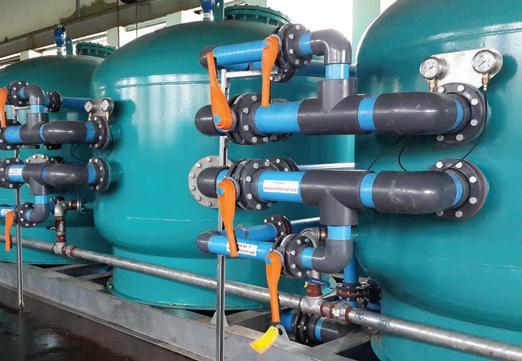

users have been slow to adopt the new technologies. Most users still use the antiquated approach of selecting a pump that can meet the highest rate that will be demanded, resulting in a huge amount of unnecessary energy waste over the lifetime of the pump.
ARC believes this resistance to implementing intelligent pumps is based partly on cultural resistance and partly on the slightly higher initial cost. However, in most applications, the slightly higher upfront costs of intelligent pumps are more than offset by the overall savings in lifetime costs.
At this point, ARC research indicates that intelligent pumps are beginning to gain wider popularity in at least two industrial sectors: building HVAC, and municipal water and wastewater.
The demand in buildings stems from certifications and standards. Today’s building designers strive for “green” buildings with the smallest possible carbon footprints. For many in the US, LEED certification is a key objective. And, of course, the reduced HVACrelated operating costs offered by intelligent pumps appeal to building owners and managers.
In the municipal water and wastewater industry, pumps often represent the single largest cost factor.


39 www.pumpindustry.com.au pump industry | Spring 2017 | Issue 21 SMART PUMPS
Th e rm o pl a stic Valv es | Ac tu a tion & Co ntr o ls | Stra in e rs | Filt e rs | Instrum e nt a ti on | Pumps | Bul khe ad F it t ings & Ta nk Acce ss o rie s Hayward is a registered trademark of Hayward Industries, Inc. © 2016 Hayward Industries, Inc. WATER & WASTEWATER TREATMENT MADE EASY... Get the Advantage of Hayward Flow Control Solutions wastewater treatment needs. From our world class basket strainers to our valves and actuation, our industry-leading products are ideally suited for the vast range of requirements for multiple applications in water and wastewater treatment systems We understand the precise requirements for water and wastewater treatment systems and are committed to offering solutions that will keep your systems working right for years to come. For more information, please contact us at or call 0468 486 798. IDE AL FO R TH E FOLLOW ING SYS TEMS AND APPL ICATIONS • C HEM ICA L DO SI NG / D IL UT IO N R EVE RSE O S MO SI S • DE SA LI NAT IO N MEM BRA NE SY ST EM S • NE UTR AL IZATI ON P RO CES S MED IA F ILTR ATI ON • C HEM ICA L TRANS FE R / H A NDL ING 32050_Hayward_HalfPgAdHorz_PumpIndustry.indd 1 10/3/16 2:36 PM sales@flowcontrol.net.au See us also at
The water industry has seen considerable benefits from the introduction of intelligent pumping systems.
Traditionally, municipalities install fixed-speed pumps designed to handle peak demand. As a result, at times of less-than-peak demand, these pumps continue to run at the same high rate, resulting in excessive energy use and a huge buildup of pressure in the piping systems. This often causes cracking and rupturing of the infrastructure, resulting in a massive amount of water being lost. In some cities, up to 50 per cent of water put into the system is eventually lost.
So, in addition to higher-thanrequired energy costs, use of non-intelligent pumps contributes (directly or indirectly) to increased infrastructure costs and lost revenue for the municipality. As consumers, administrators, and politicians become more aware of the need for increased efficiency, municipalities have increased their use of intelligent pumping systems.
Aside from the energy-saving benefits, intelligent pumping systems also provide the ability for users to remotely monitor the health of the pump. Embedded sensors can measure leakage, vibrations, overheating, clogs, etc and alert users to an issue long before the pump actually breaks to support predictive maintenance strategies and reduce unplanned downtime.
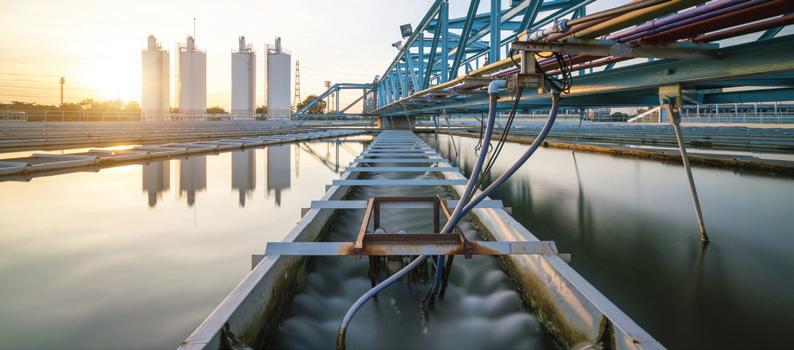
Intelligent features on modern pumps reduce energy use, and thus costs, for industrial users.
Recommendations
Certainly, the specific energy savings realised from adopting an intelligent pump system can vary greatly depending on the application and facility. In existing facilities, an energy audit of the current pumping systems can provide a helpful data point for evaluating the total lifecycle cost savings that upgrading to intelligent pump systems could produce. Assuming that these cost savings outweigh the cost of implementing the new system, it should be relatively simple to build a business case for the upgrade.
Looking ahead, rising energy prices, the need to meet new energy and emissions standards, and increasing demand by consumers for more environmentally friendly products are
likely to further increase future adoption across a broader range of industries. When considering an intelligent pump system it is important to:
• Evaluate current energy use
• Evaluate the total lifecycle cost of current pumps compared to a new intelligent system
• Carefully match the pump system to the application requirements and consider installing booster pumps to meet infrequent peak flow requirements
For more information or to provide feedback, please visit www.arcweb.com to contact ARC Advisory Group.
























40 pump industry | Spring 2017 | Issue 21 www.pumpindustry.com.au SMART PUMPS
Aqseptence Group - Summer - Half Page (PRINT).indd 1 13/12/2016 1:50:17 PM
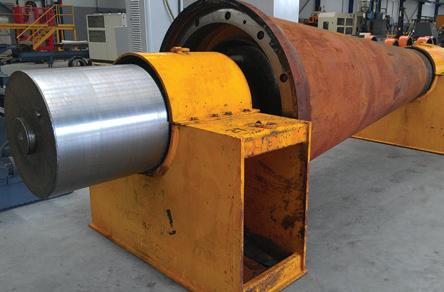

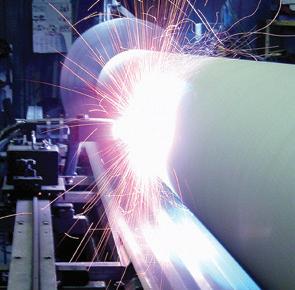


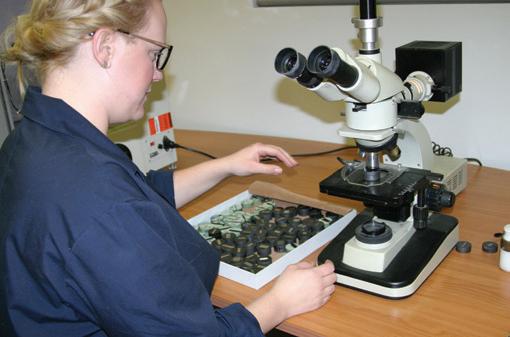
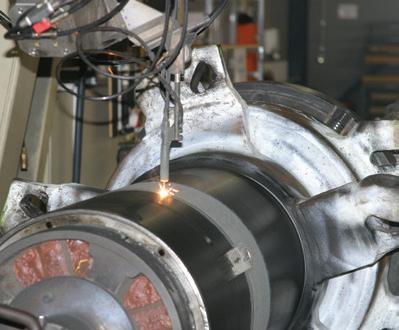
Nobody extends wear life like
do.
You’ve probably heard about the innovation and progress LaserBond is achieving in surface engineering technology. We apply new surfaces to worn parts so they work literally better than new. And brand new parts can also be treated so they last a lot longer. Customers enjoy longer wear life, fewer shutdowns for component replacement, and better workplace health and safety control. Our laser-applied coatings typically at least double the life of a part.
The new ‘laser cell’ in our SA engineering facility will have the highest-power laser beam used for laser cladding in the Southern Hemisphere. We already operate the three most powerful lasers in this industry in Australia. These are supported by many other processes and technologies, such as HP HVOF, all supported by our own well-equipped metallographic laboratory and state-of-the-art workshops. If you’re looking for the best surface engineering available, look no further.


LaserBond Limited | www.laserbond.com.au Sydney | Adelaide | Freecall 1 300 527 372 International +612 4631 4500 | Fax +612 4631 4555 Email info@laserbond.com.au Quality 9001, Environment 14001, Health & Safety 4801
LaserBond – an excellent choice
we
14664 Branding1A4 1992• 2017 ANNIVERSARY
NO SUBSTITUTE FOR HANDS ON PUMP TRAINING
In this pump end user interview, Luke Hateley, Mechanical Engineer at Yarra Valley Water and member of the PIA’s register of trained personnel talks about his experience in the industry, the importance of pump efficiency and why continuous pump training is vital in his role.
Mr Hateley has been in his current role as Mechanical Engineer for the last twelve months, and before that across other roles at Yarra Valley Water for the last six years.
In these positions, he has seen first-hand the challenges that many people in the industry experience, and believes that some of the most important issues in pumps today are blockages and efficiency.
“Reducing the risk of blockages at sewage pump stations and energy efficiency [are important] as topics in
general for all pumps,” Mr Hateley said. “With the impacts of climate change and rising electricity prices this is becoming more and more important. While there is a lot of focus on motor efficiency at the moment, there is often bigger gains to be had by improving the hydraulic efficiency and looking at the system as a whole.”
Hands on industry training
Mr Hateley has recently completed a pump installation and commissioning course through Pump Industry Australia (PIA).
























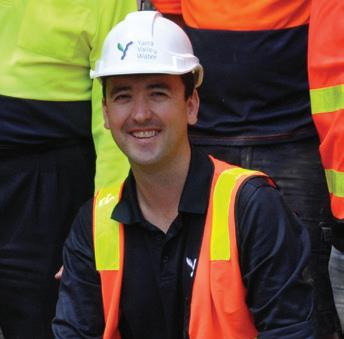
Through these courses, PIA provides members with the knowledge and skill set to effectively verify that pumping equipment has been correctly installed. Their training program also involves a






























SCT pumps e ectively convey a large range of fluids and solids throughout multiple industries to provide the best solution for your application.
42 pump industry | Spring 2017 | Issue 21 www.pumpindustry.com.au TRAINING
The special design of SEEPEX progressive cavity pumps with Smart Conveying Technology (SCT) o ers reduced energy consumption along with ease of maintenance, extended service life and significantly reduced life cycle costs.
BENEFITS
Up to 25% less energy used than conventional progressive cavity pumps
Quick and simple maintenance
Reduced downtime
Increased productivity and efficiency
Up to 200% increase of rotor and stator life SEEPEX Australia Pty. Ltd. info.au@seepex.com www.seepex.com INCREASED EFFICIENCY.
SCT PUMP
Luke Hateley, Mechanical Engineer at Yarra Valley Water.
commissioning element that will ensure reliable equipment operation. Once someone has completed the training, PIA issues a certificate of accreditation and the person is added to the register of trained personnel.
Mr Hateley said that while the pump installation and commissioning course was his first dealing with PIA, he looks forward to building on the relationship with them in the future.
“There are always new things to learn and the PIA team are happy to share their knowledge and experiences with those who attend the training.
“There is a lot of material on the internet for self learning activities but for some things there is no substitute for 'hands on' training where you actually get to play around with the pumps,” Mr Hateley said.
Applying training on the job
The foundation of a reliable, longlasting pump is in the installation. Installation can involve anything from OH&S considerations and requirements to the installation of suction pipes and fittings.
Pump training provides the knowledge needed to ensure every factor has been evaluated with installing a pump. This can involve shaft alignment, piping arrangement and
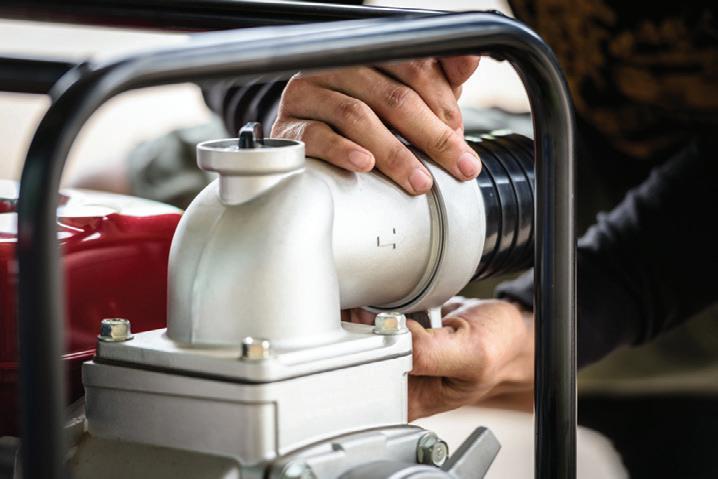
foundation assessment. Once a pump is installed, there are a number of different tests that can be applied when conducting pump commissioning. “There are various tests we request our suppliers and maintenance contractors to do for us depending on the type of installation and the criticality of the site that the pumps are installed at,”
Mr Hateley said.
While training is essential to ensure the correct installation and
commissioning, another important consideration for end users is their maintenance and repair schedules and costs as part of project planning. Mr Hateley said this is an area that he is looking to improve on.
“We are working closely with our maintenance contractor to ensure that information on historical jobs is included in the Asset Management System to enable us to make informed decisions in the future,” Mr Hateley said.
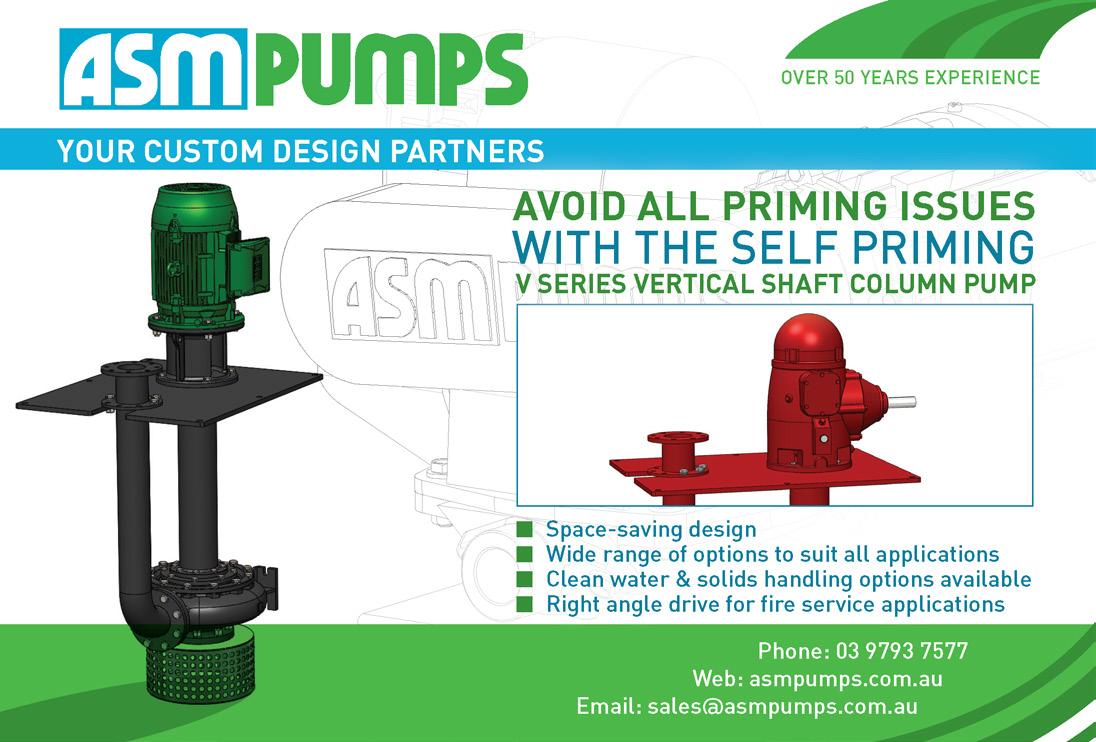
43 www.pumpindustry.com.au pump industry | Spring 2017 | Issue 21 TRAINING
System simulation as a troubleshooting tool
by Ray Hardee, Chief Engineer, Engineered Software
Often, I am asked why a customer’s system is not operating properly. In many of the cases I have limited operational experience of the customer's fluid piping system. By breaking the system down into the pump, process and control elements, one can quickly understand how the piping system operates. Since most of our customers used our piping simulation software they will also include a system simulation file of their system in question. In this month’s article we will look at a crude oil desalination system, used to remove water and various minerals from the crude oil.
The crude oil desalination system is typically the first process system found in an oil refinery. Figure 1 below provides a piping schematic of the system in question.
This system mixes a small amount of water with the crude to remove contaminants before sending it to the flash and separation towers. The crude is preheated, and water extracted from the second stage is added and the mixture is run through a mixing device before entering the first desalting unit.
The first desalter separates the oil from the brine and sends the brine effluent out for treatment, and the cleaned crude stream to the second stage where the process is repeated. The crude from the second stage is sent for further processing.
Once the system is built and placed in operation things change; equipment wears, deposits build up, replacements
and modifications are made. Process or product requirements and raw material properties begin to vary.
The initial system design no longer matches what the instruments are reporting. This is when the model becomes a great diagnostic tool. The key fact to remember is that if the reading’s no longer match the validated model, something has changed, and it isn’t the laws of physics upon which the model is based.
When comparing the piping system model to the actual system operation, if the difference between pumps suction and discharge pressures don’t match the model, then further investigation into the pump is warranted.
When looking at the customer’s model, the first question I ask is, was the manufacturer’s supplied pump performance curve used in building the model?
Surprisingly the answer is usually no. Having correct pump curves is essential to being able to troubleshoot piping systems without significant and costly trial and error methods. The pump curve helps determine if the problem is between the flanges or outside the flanges.
A pump not operating on its curve is certainly suspect and should be inspected.
If pressure drops across a valve, or if a heat exchanger or other device – or even a specific length of pipe –doesn’t match the model’s results, then that can lead you to a root cause. If the pressure is too high in the process elements, the flow path may be blocked with debris or buildup.
Did the pressure drop too low? This could lead you to investigate whether there has been erosion, failure in a positioning device or control system
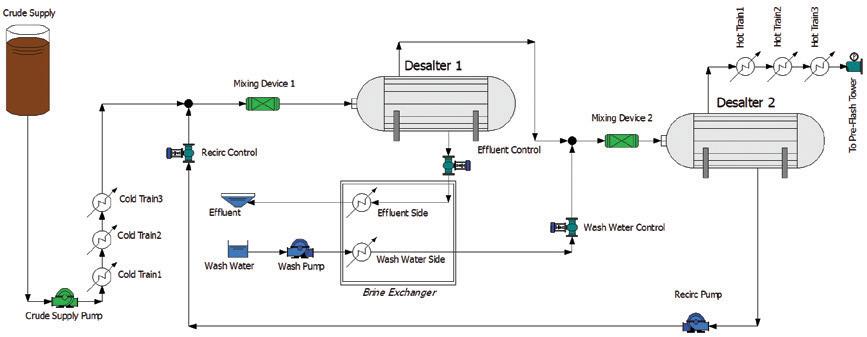
44 pump industry | Spring 2017 | Issue 21 www.pumpindustry.com.au TECHNICAL
Figure 1: Crude Desalting System Model
error, or even potentially indicate there is a leak somewhere between the sensors. Coupling the comparison of model and actual flow rates with pressure drops is even more revealing.
The key point is that consulting the model as a diagnostic tool can help identify root cause more rapidly by pointing us in the right direction.
Looking at the system
As designed, the three pumps are all running pretty close to their respective best efficiency points (BEPs) and valves are all within their control ranges. The pumps and the valves are all instrumented, but the individual process devices were not. The water to crude volumetric ratio for each unit was designed to be around 5.2 per cent. Refer to Table 1 for initial system design conditions, with available instrumentation data highlighted in blue.
Table 1. System Elements Operating As-Designed
After some time, an operator noted some noise coming from the effluent control valve. The operator checked the other valves and noted that the Recirc Valve was 100 per cent open and no longer controlling flow, and sampling the mixes going into the desalters showed the water to crude volumetric ratio going in to Desalter 1 had dropped to 4.8 per cent, and going in to Desalter 2 was now 5.6 per cent.
The operator then took measurements from all the instrumented devices. The readings are shown in Table 2 with design values in brackets for comparison.
The noise from the effluent control valve indicates there may be cavitation or choked flow in the valve; the as-designed model indicates choked conditions would be flow over 271gpm or pressure drop over 76 psi.
Since our set point is 270, we are close, but still OK, so the noise is likely due to an increase pressure drop across the valve. Checking the gage we see the pressure drop across the valve is 82psi, and the upstream pressure is higher than originally modeled.
Looking at the wash water control valve, we can see it is operating properly, but opens more than the model would expect. We can verify the downstream pressure from that is also higher than originally modelled. The pressure is higher than expected upstream of the Mixing Device 2, but lower downstream of Desalter 2. Now we can zero in on a probable cause – plugging in Mixing Device 2 which turns out to be the case.
This scenario highlights another way that system analysis is critical, not only in the design phase, but in operation and troubleshooting. The two control valves exhibiting the errant behavior were located away from the actual problem. If we took a component view there may have been more investigation into the valves or even the pump to see what the problem was, but with a validated system model the actual readings from the system can be compared to the expected values in the model, and can be a valuable troubleshooting tool to have in your toolbox, especially in areas or parts of your system where instrumentation is not installed.
When you take ownership of operating your system, make sure you get copies of the system analyses –including all the pump curves – and keep them up-to-date. When something goes wrong it will be an invaluable tool for troubleshooting and will be accessible with a touch of a button.
Having a system model that provides the expected parameters and pump curves for each pump in the system can be of great benefit in this scenario. One possible cause for the reduced flow in the recirc line would be pump damage or impeller corrosion, which would result in the pump operating off of its curve.
Fortunately, we have the pump curve; a quick review of where the pump’s operating point falls shows that it is still on the curve and operating properly so we don’t have to shut the system down and take the pump apart to see.
ABOUT THE AUTHOR
Ray T Hardee, PE, is the Chief Engineer and a principle founder of Engineered Software Inc., creators of PIPE-FLO® and PUMP-FLO® software. The PIPE-FLO product line helps some of the largest companies across a variety of industries find hidden profit in the design and operation of their fluid piping systems through simulation
services, and training opportunities. Hardee is a member of the Hydraulics Institute, ASME Energy Assessment for Pumping Systems standards committee and ISO Pumping System Energy
Piping System Fundamentals and contributions to HI’s Pump Life
reached at SimGuyRay@eng-software.com
45 www.pumpindustry.com.au pump industry | Spring 2017 | Issue 21 TECHNICAL
Pump Head (ft) Flow (gpm) Eff. (%) Process dP (psi) Crude Supply 354 4770 78% Σ Cold Preheat Train 12.0 Recirculation 102 250 63% Σ Hot Preheat Train 12.9 Wash Water 304 250 65% Mixing Device 1 5.2 Control Pos. (%) Flow (gpm) dP (psi) Mixing Device 2 5.0 Recirc 93% 250 5.2 Brine HX - WW Side 7.8 Effluent 59% 270 76 Brine HX – Effluent Side 9.2 Wash Water 69% 250 22 Desalt Stage 1 15.7 Desalt Stage 2 15.0
Pump Head (ft) Flow (gpm) Eff. (%) Crude Supply 362 [354] 4566 [4770] n/a Recirculation 108 [102] 219 [250] n/a Wash Water 304 [304] 250 [250] n/a Control Pos. (%) Flow (gpm) dP (psi) Recirc 100% [93%] 219 [250] 3.2 [5.2] Effluent 59% [59%] 270 [270] 82 [76] Wash Water 69% [69%] 250 [250] 16 [22]
Table 2. System Measurements from Instrumented Devices [Design values in brackets]
Assessment committee. Hardee’s publications include
and Optimizing Piping Systems. He can be
software, modelling
Cycle Cost
PUMP SCHOOL

SINGLE VERSUS PARALLEL OPERATION OF CENTRIFUGAL PUMPS
Parallel operation may be required to meet variable demands, such as flood control, or to satisfy a temporary condition that occurs such as when changing over pumps in an uninterruptible process.
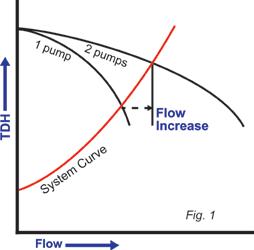
FTwo identical pumps operating in parallel are capable of producing twice the flow of a single pump at any given Total Dynamic Head (TDH). However, the actual flow rate realised in the system is dictated by the intersection of the system curve with the pump
curve. Unless the system curve is variable, the flow increase may not be that significant.
For example, assume that there is a set of fixed spray nozzles, where the system resistance is purely frictional, and varies only as a result of flow change. When a second pump is introduced, resistance in the system increases as the flow increases.
The flow will increase only to where the system curve intersects the two-pump curve, as shown in Figure 2. The amount of flow increase is dictated not only by the system curve, but also by the steepness of the pump curves.
Pumps with flat curves will have less TDH separation than pumps with steep curves and therefore will have less flow rate change.
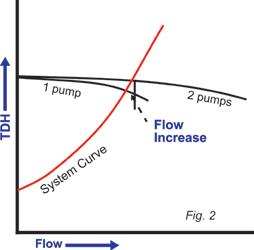
A fire pump installation would be an example of a system that has a variable system curve. Figure 3 illustrates this. Each time an additional fire nozzle is activated, the system resistance is decreased. This causes the system curve to move to a higher flow on the pump curve, increasing the kW load on the pump and decreasing the amount of TDH available. Eventually, another
46 pump industry | Spring 2017 | Issue 21 www.pumpindustry.com.au
Figure 2
igure 1 illustrates the characteristic of single versus parallel operation.
Figure 1
fire pump may need to be activated to maintain the system pressure as more nozzles come online.
Figure 3

Continuously rising TDH curves
Pump specifications often dictate that pumps have a continuously rising head curve to shut-off. It is a characteristic of certain pumps to have a head curve that droops as the flow approaches shut-off. This characteristic is quite prevalent in pumps with specific speeds under 30 (Ns~1550 US units). Curves with a drooping shut-off characteristic may experience load sharing problems when operating in parallel with other pumps.
Figure 4
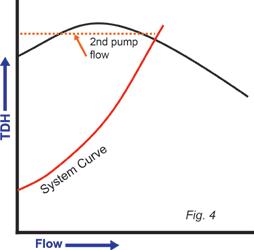
In Figure 4, the system and TDH curves intersect at a TDH that is greater than the shut-off TDH value and at a lower TDH than the max TDH of the curve. When the second pump starts, the flow rate will increase only to the first point where the TDH matches the pressure in the system.
Due to the first pump’s operating TDH point being mirrored by another at a lower flow, the second pump’s flow rate will not increase beyond the low flow point. At best, the pumps will share the load unevenly, with the second pump operating at a lower efficiency.
Worse, the second pump might operate at less than its minimum allowable design flow, resulting in damage to the equipment and possible injury to personnel.
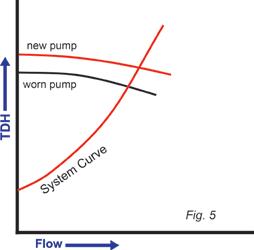
A similar condition may exist when one pump is worn. This is referred to in Figure 5. As a pump wears, the amount of TDH produced at any given flow rate diminishes. If the new pump’s intersection with the system curve is above the shut-off TDH of the worn pump in parallel, it will force the worn pump into a shut-off condition.
Load sharing problems, between pumps operating in parallel, may increase wear, reduce seal and bearing life, lower operating efficiencies and limit process operations. In the absence of any flow measurement capability, an uneven performance distribution, between pumps operating in parallel, is easier to avoid than to detect.
Proper pump selection for parallel operation and pump performance monitoring are the best tools in avoiding load sharing problems and maintaining a well operating parallel pump installation.
Parallel operation of unmatched pumps
When pumps operate in parallel, the flow rate at any given TDH point is additive. In the case of pumps that have identical operating characteristics, the flow would double. For example, two pumps that each had a capacity of 100 M3/hr at 50 M TDH would have a combined capacity of 200 M3/hr at 50 M TDH.
Again, the system curve does not change, so the actual change in flow that occurs with bringing a second pump online, in parallel, is determined by the characteristic curve intersection with the system curve. This is shown in Figure 2.
When a pump is operated in parallel with another pump that has a different operating characteristic, the same rule applies as for identical pumps; for any TDH, common to both pumps, the flow characteristic will be additive.
If one pump exhibits a lower shut-off TDH characteristic, it will operate at shut-off until the dominant pump moves far enough out on its curve so that its TDH falls below the shut-off TDH of the pump with lower head (Figure 5).
The danger here is in the systempump interaction. If the system curve intersection with the characteristic curve is at a higher TDH than the shut-off flow of the weak pump, the weak pump will be forced to run at shut-off and a serious failure could occur. In Figure 6, a zero-flow condition for the weak pump will exist when the system curve intersection is to the left of the vertical dashed line.

As a general rule it is a good idea to have flow measurement installed for any pumps designed to operate in parallel. Without flow measurement, it is very difficult to determine what the load sharing is between the two pumps.
Motor power is often a questionable indicator of flow, as many power curves are quite flat and show small changes in load over relatively large changes in flow.
Also, when wear does occur, the power draw may remain relatively constant even though performance is falling off. This is due to a decrease in pump efficiency which is not visible to the pump operator.
Phone: 1300 789 466 or visit www.kelairpumps.com.au
47 www.pumpindustry.com.au pump industry | Spring 2017 | Issue 21
Figure 5
Figure 6
PUMP SCHOOL
Pumps Australia “When
Matters”
Article courtesy of Kelair
Pump Knowledge
SUMMER 2018
Deadline: 1 December 2017 MAIN
AUTUMN 2018
Deadline: 9 March 2018
1 June 2018
SPRING 2018
Deadline: 21 September 2018
pump industry | Spring 2017 | Issue 21 www.pumpindustry.com.au ADVERTISERS’ INDEX ABB Australia ............................................... 28 Adelaide Control Engineering 24 Angus Flexible Pipelines..................... 22 -23 Aqseptence Group 40 ASM PUMPS 43 Australian Pump Industries (Aussie Pumps) 8 Automation Direct 7 Brown Brothers Engineers ..................27, 35 Deutz Australia 1 Dowdens Pumping and Water Treatment IBC Ebara Pumps Australia 18 -19 Elaflex Pacific ........................................... OBC Franklin Electric 12 Green Process .............................................. 13 Hayward Flow Control 39 HE Brehaut (Hebco) ...................................... 9 Hydro Australia 17 Hydro Innovations 25 Kelair Pumps Australia................................. 6 Kessler Couplings & Engineering Supplies Pty Ltd (KCES) 10 KSB Australia ................................................ 14 Kubota 20 - 21 Laserbond ...................................................... 41 Pentair Flow Technologies Pacific 11 Pioneer Pump ................................................ 16 SEEPEX Australia 42 Shakti Pumps 15 Sulzer Australia ........................................... 33 United Pumps Australia 29 WEG Australia ........................................ 30 -31 Weir Minerals 3 Zetco Valves ............................................... IFC Editorial schedule Subscribe NOW www.pumpindustry.com.au/subscribe/
Oil & gas Also featuring State of industry Valves Fire Power generation
FEATURE
MAIN FEATURE Water Also featuring Seals Motors & drives Food Irrigation WINTER
Deadline:
MAIN FEATURE Mining Also
Coal
Wastewater Recycling
2018
featuring
seam gas
MAIN FEATURE Energy efficiency Also featuring Smart pumps Training Plus
48
the 2019 Industry Capability Guide

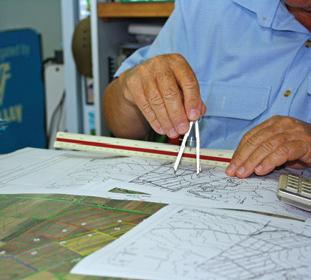
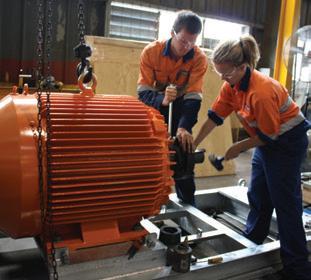

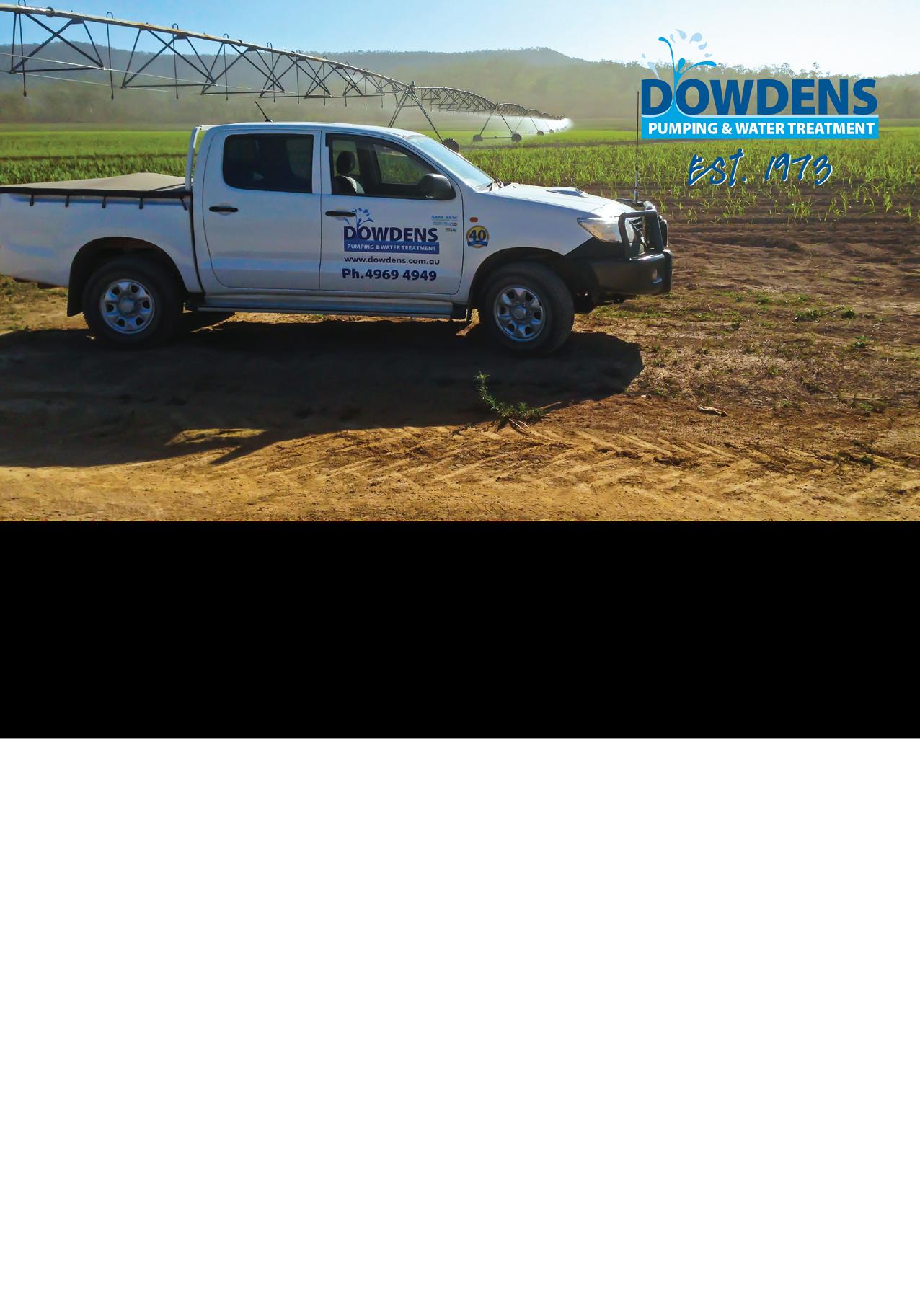
Many options, quick choice.

































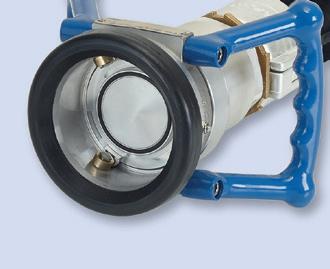

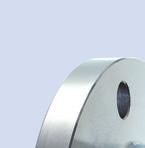
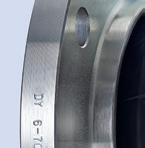
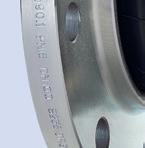


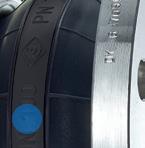




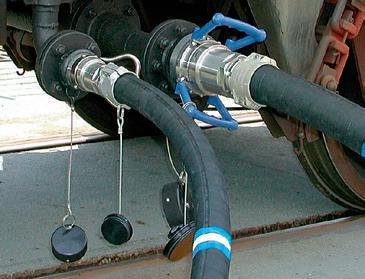
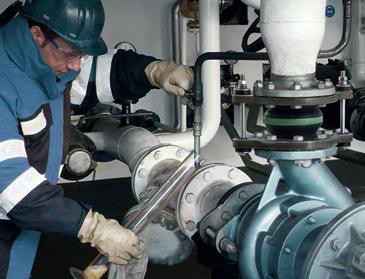










ERV-BR : Rubber Expansion Joint for abrasive Media




















ELAFLEX PACIFIC, a daughter company of ELAFLEX Hamburg in Germany, is the supplier of the Elaflex product range: ZVA nozzles, rubber hoses, couplings and ERV expansion joints along with MannTek Dry Disconnect Couplings in the Pacific region, including Australia, New Zealand and the Pacific Islands.
The ELAFLEX ERV-BR, rubber expansion joint has been created specifically for abrasive media and is perfectly suited to the aggressive nature of sludge dewatering, mineral processing and the transfer of many types of slurries. Our online configurator is the perfect tool to get a fast and efficient overview of the product you require. Try it at
http://ervconfigurator.elaflex.com.au/






























































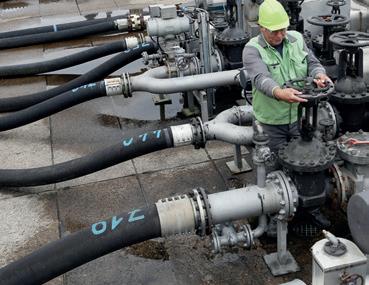
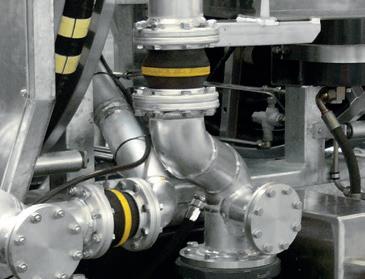
ELAFLEX PACIFIC PTY LTD Ph. +61 2 8058 9258 info@elaflex.com.au www.elaflex.com.au Perfect Quality
Equipment
the
Durable
Refuelling
from
Specialist
Dependable Premium Class : Chemical Hoses to EN 12115














 Published by Monkey Media Enterprises
Published by Monkey Media Enterprises












































































































































































































































































































































